Vol. 72, No. 5 (2023)
2023-03-05
INVITED REVIEW
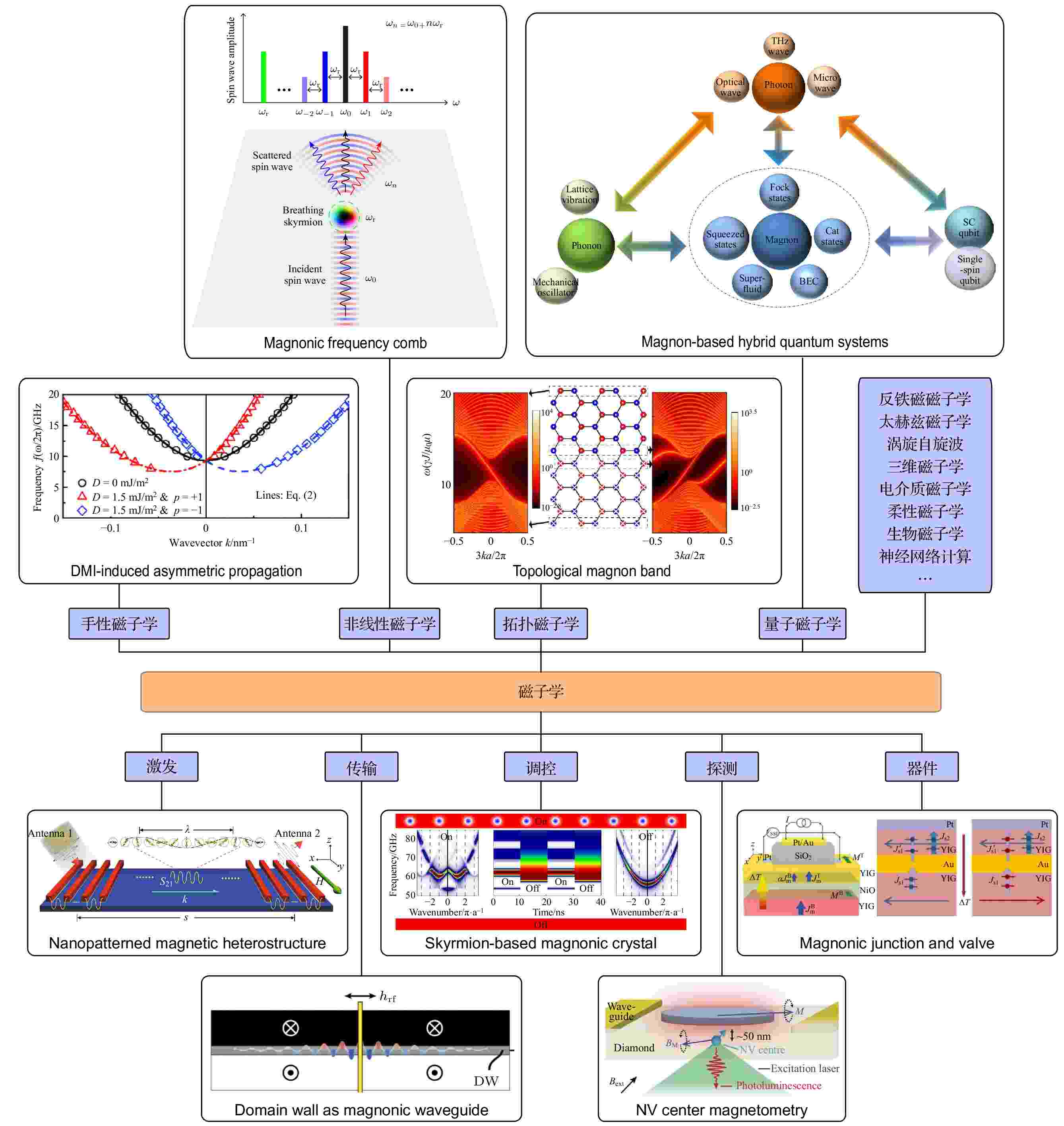
INVITED REVIEW
2023, 72 (5): 057503.
doi:10.7498/aps.72.20221997
Abstract +
In recent years, with the rapid development of the emerging technologies including the internet of things, cloud computing, big data, and artificial intelligence, higher computing capability is required. Traditional semiconductor devices are confronting huge challenges brought by device miniaturization, energy consumption, heat dissipation, etc. Moore’s law which succeeds in guiding downscaling and upgrading of microelectronics is nearing its end. A new information carrier, instead of electrons, is required urgently for information transmission and processing. Spin waves are collectively excited waves in ordered magnets, and the quantized quasi particle is referred to as magnon. The propagation of magnons does not involve electron motion and produces no Joule heating, which can solve the increasing significant issues of heating dissipation in electronic devices. Thus, magnon-based devices have important application prospects in low-power information storage and computing. In this review, we first introduce the recent advances in the excitation, propagation, manipulation, detection of spin waves and magnon-based devices. Then, we mainly discuss the researches of our group. This part is described from four aspects: 1) Chiral magnonics, including the chiral propagarion of magnetostatic spin waves, Dzyaloshinskii-Moriya interaction(DMI)-induced nonreciprocity of spin waves, spin-wave propagation at chiral interface, magnonic Goos-Hänchen effect, spin-wave lens, and magnonic Stern-Gerlach effect; 2) nonlinear magnonics, including three-magnon processes induced by DMI and noncollinear magnetic textures, skyrmion-induced magnonic frequency comb, twisted magnon frequency comb, and Penrose superradiance; 3) topological magnonics, including magnon Hall effect, magnonic topological insulator, magnonic topological semimetal, topological edge states and high-order corner states of magnetic solitons arranged in different crystal lattices; 4) quantum magnonics, including quantum states of magnon, magnon-based hybrid quantum systems, and cavity magnonics. Finally, the future development and prospect of magnonics are analyzed and discussed.
SPECIAL TOPIC—Attosecond physics
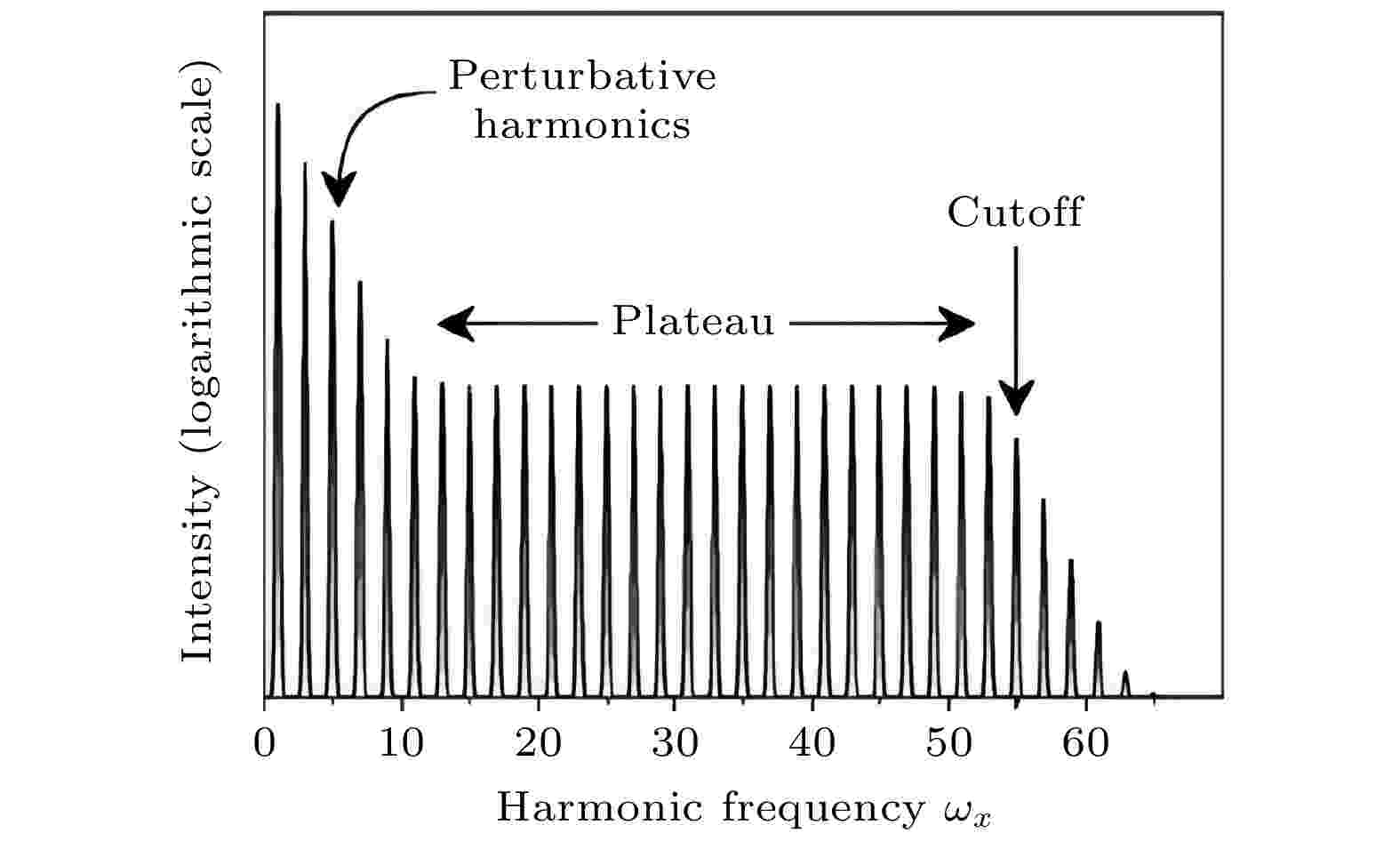
2023, 72 (5): 053202.
doi:10.7498/aps.72.20222436
Abstract +
In the past two decades, the development of laser technology has made attosecond science become a cutting-edge research field, providing various novel perspectives for the study of quantum few-body ultrafast evolution. At present, the attosecond pulses prepared in laboratories are widely used in experimental research in the form of isolated pulses or pulse trains. The ultrafast changing light field allows one to control and track the motions of electrons on an atomic scale, and realize the real-time tracking of electron dynamics on a sub-femtosecond time scale. This review focuses on the research progress of ultrafast dynamics of atoms and molecules, which is an important part of attosecond science. Firstly, the generation and development of attosecond pulses are reviewed, mainly including the principle of high-order harmonic and the separation method of single-attosecond pulses. Then the applications of attosecond pulses are systematically introduced, including photo-ionization time delay, attosecond charge migration, and non-adiabatic molecular dynamics. Finally, the summary and outlook of the application of attosecond pulses are presented.
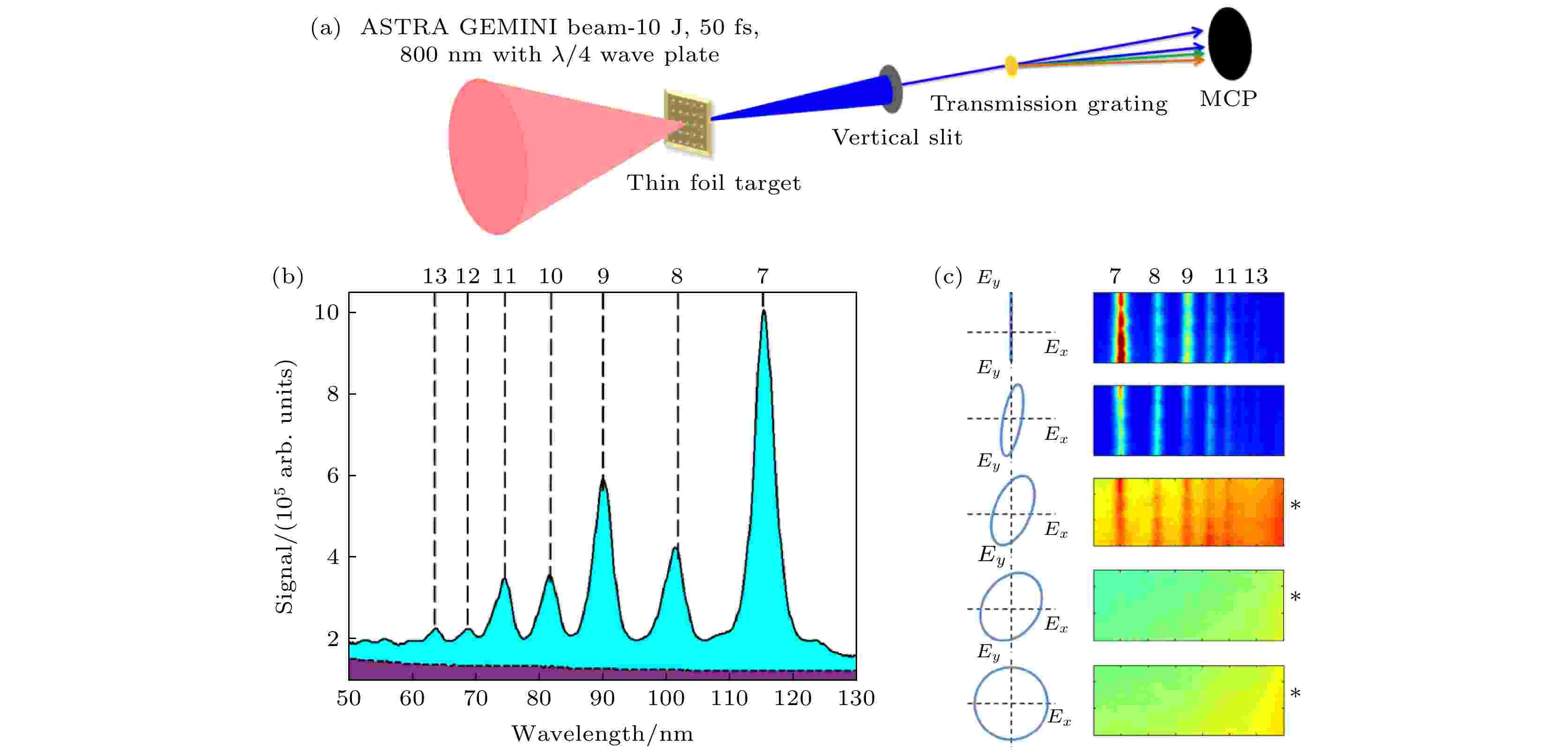
2023, 72 (5): 054207.
doi:10.7498/aps.72.20222262
Abstract +
This article gives an overview on recent progress in the generation of isolated attosecond pulse and isolated half-cycle attosecond pulse. As an isolated attosecond pulse is preferred in the pump-probe experiments for the dynamics of electrons in atom, molecule, or solid, we focus on the isolated attosecond pulses generation from the intense laser pulses interaction with solid density plasma, which have higher intensity and narrower pulse width than that generated in the interaction of laser pulse with gas target. We have firstly discussed the physical mechanism of isolated attosecond pulse generation, such as polarization gating, two-color laser pulses, attosecond light houses, and capacitor target mechanism. In the polarization gating mechanism, we have discussed the physical mechanism that the higher-order harmonic efficiency decreases with the increase of ellipticity. Both the coherent synchrotron radiation mechanism and the relativistic oscillation mechanism can control the intensity of high-order harmonic generation by controlling ellipticity of the incident laser pulse. We also discussed other mechanism to enhance the isolated attosecond pulse bursts in detail. Secondly, we focus on the isolated half-cycle attosecond pulses, which can also be generated from the intense laser pulses interaction with solid density plasma by double foil target mechanism, gas-foil target mechanism, cascaded generation mechanism, microstructured target mechanism, and three-color laser pulse mechanism. The half-cycle attosecond pulses can be useful for probing ultrafast electron dynamics in matter via asymmetric manipulation. Accordingly we discussed the physcial mechanism, experimental feasibility, calibration measurement, and application prospect of half-cycle attosecond pulse in this article. The above mechanism can directly generate ultra-intense isolated attosecond pulses in the transmission direction without requiring extra filters and gating techniques. The dense electron sheet is crucial for the generation of intense attosecond pulses in different mechanisms, such as coherent wake emission (CWE), relativistic oscillating mirror (ROM) and coherent synchrotron emission (CSE). In this article, all the mechanism for half-cycle attosecond pulses generation can ensure only one electron sheet contributing to the transmitted radiation. We discuss the theoretical model of nanobunching of the electron sheet, which shows that the relativistic oscillation is crucial for the formation of electron sheet.
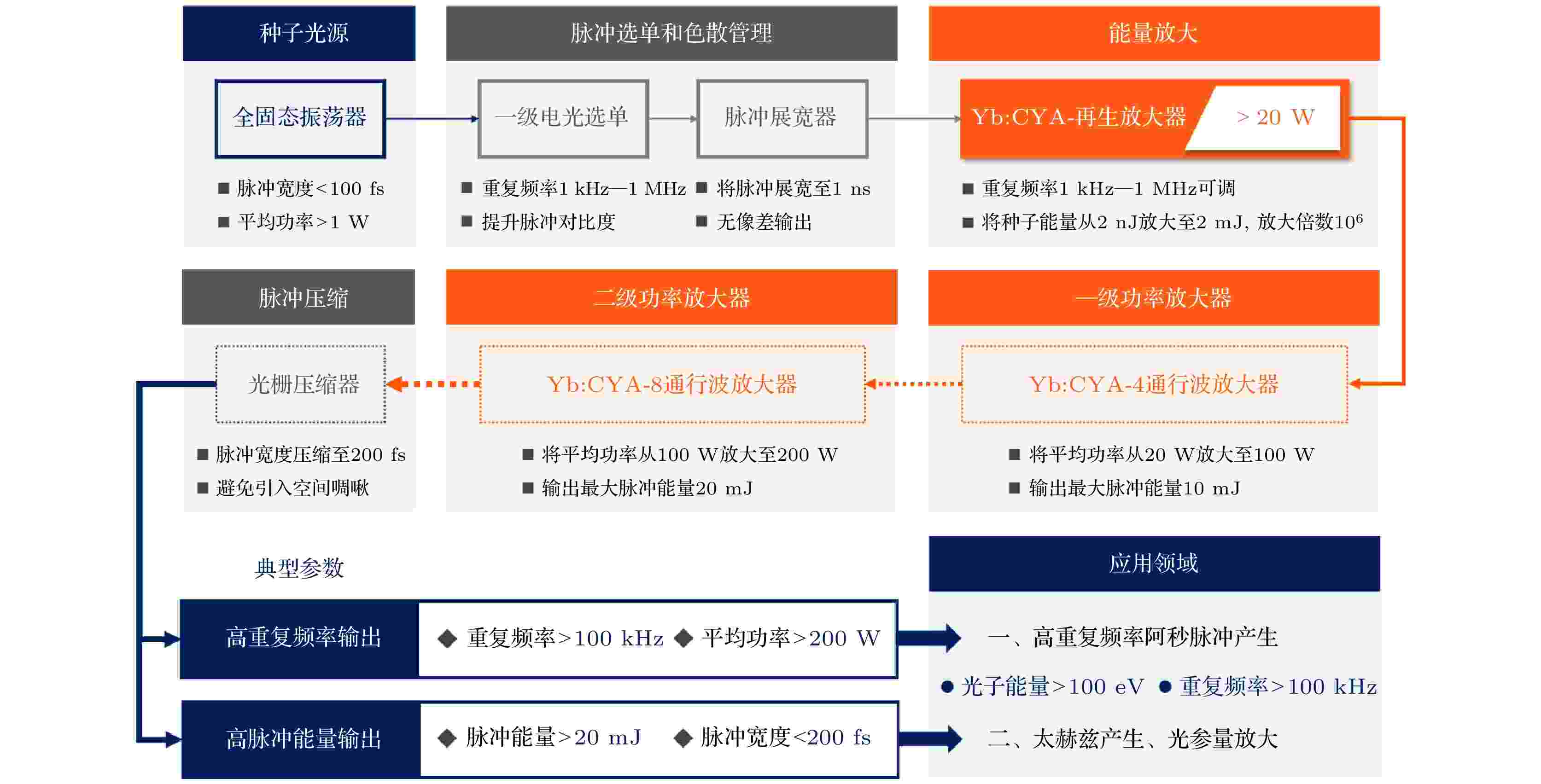
COVER ARTICLE
2023, 72 (5): 054204.
doi:10.7498/aps.72.20222141
Abstract +
Attosecond science is one of the driving forces for developing the femtosecond amplifiers of high average power and ultrashort pulse duration. In this work, the regenerative amplification is studied experimentally and theoretically based on Yb:CaYAlO4crystal for the practical needs of high-repetition-rate attosecond light sources. In the theoretical study, a mode-tunable regenerative cavity with good thermal stability is designed based on the thermal lens calculations of Yb:CaYAlO4crystal; the amplified output energy and spectra ofπandσpolarization of the crystal are calculated. In the experiment, theπ-axis of Yb:CaYAlO4crystal is parallel to the laser polarization, and the laser amplifier emits 1.61 mJ pulses with average power 16.1 W. Notably, the dip of theπ-polarization emission spectrum near 1025.1 nm compensates for the gain narrowing of the seed laser during amplification. Thus, the center wavelength and the spectral full width at a half maximum of the amplified laser are 1030 nm and 16 nm respectively. Using a grating-pair for compression, 149 fs pulses with peak power 9.5 GW are obtained. In comparison, the σ-polarization emission spectrum of Yb:CaYAlO4crystal is relatively flat in a range from 1000 to 1050 nm, but with a larger gain cross-section. When the laser polarization is parallel to theσ-axis of Yb:CaYAlO4crystal, 2.87 mJ pulses at 10 kHz repetition rate are achieved, with an average power of 28.7 W. In this case, the center wavelength and the spectral full width at half maximum of the amplified laser are 1037 nm and 11 nm respectively. Using a grating-pair for compression, 178 fs pulses with peak power of 14.2 GW are obtained. The beam quality factor measured is 1.09 along thex-axis of the amplified laser and 1.17 along they-axis. To the best of our knowledge, this is the highest average power and the maximum pulse energy obtained from the Yb:CaYAlO4amplifier. For applications in high-repetition-rate attosecond light sources, terahertz generation and optical parametric amplification, subsequent laser outputs with average power 200 W, pulse energy 20 mJ and pulse duration less than 200 fs are expected to be achieved by adding two stages of traveling-wave amplification.
REVIEW
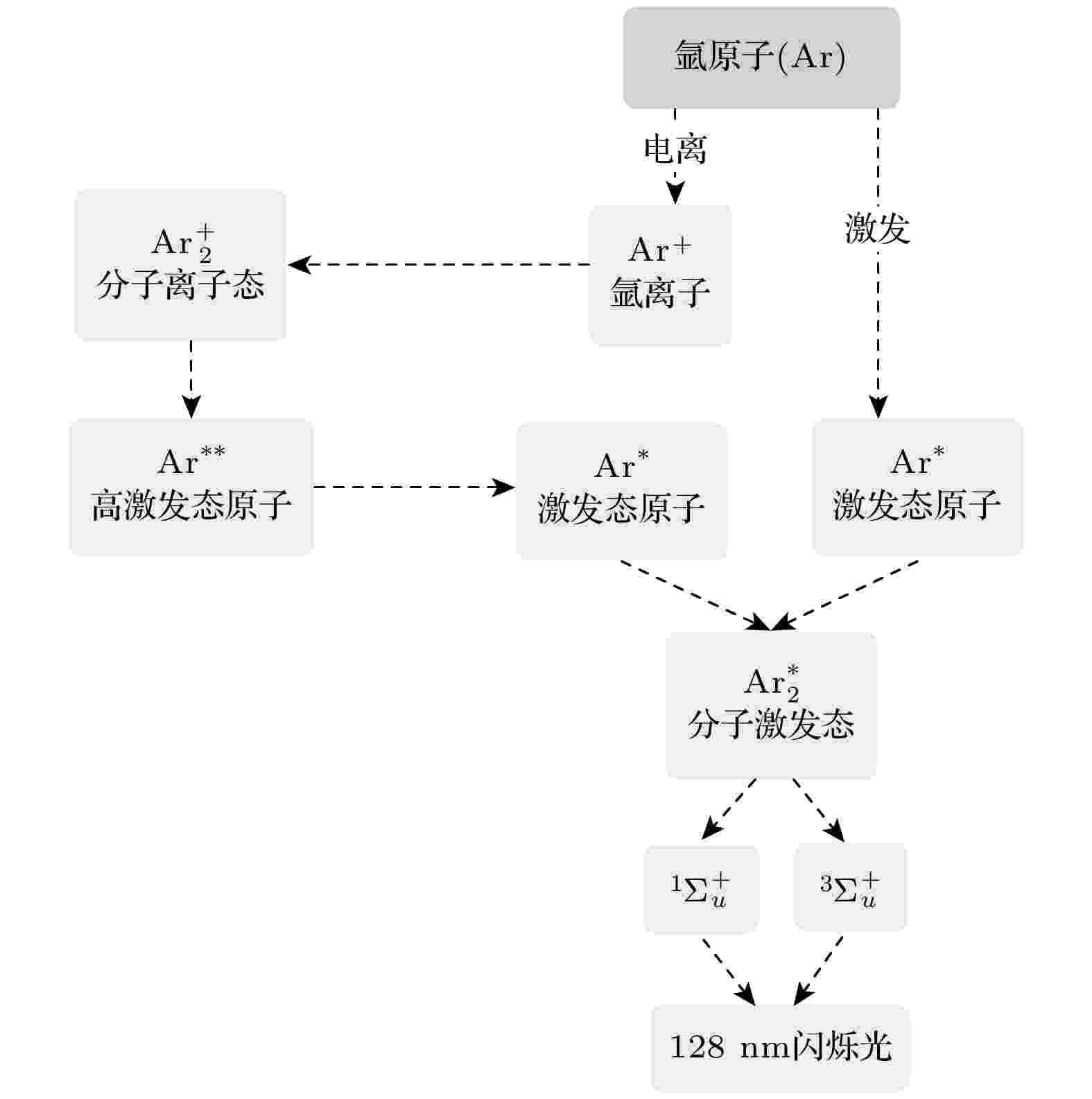
2023, 72 (5): 052901.
doi:10.7498/aps.72.20222055
Abstract +
Rare event detection is a frontier subject in particle physics and nuclear physics. In particular, dark matter detection, neutrino-free double beta decay and neutrino-nucleon coherent elastic scattering are being planned and implemented gradually. Rare event detection requires not only the detectors to possess excellent performances but also extremely low environmental background, so the selection of detectors and related materials is an important issue in rare event detection. Liquid argon has become an important scintillator material for scintillator detectors because of its low cost, good scintillation performance and large volume. Liquid argon was first studied in the 1940s as a sensitive material for ionizing radiation detectors. The first measurements of high-energy beta particles were obtained by using a liquid argon ionization chamber in 1953. The ICARUS group put forward the idea of constructing liquid argon temporal projection chamber, and made attempt to construct liquid argon temporal projection chamber in 1977. The scintillation light signals were collected for the first time in a liquid argon temporal projection chamber in 1999. Thus, the drift time of the particle can be obtained to determine the particle track. After development, single-phase liquid argon scintillator detector and two-phase argon time projection chamber have become two common types of liquid argon detectors, and have been extensively used in rare event detection experiments in recent years. For dark matter detection, the DEAP group and DarkSide group have achieved good results with single-phase liquid argon scintillation detector and two-phase argon time projection chamber, respectively. For neutrino-free double beta decay experiments, the GERDA group has done a lot of researches of liquid argon anti-coincidence system and applied the said system to experiments. The LEGEND group, which is the combination of GERDA and MAJORANA experimental group, upgraded the liquid argon anti-coincidence system which was applied to the following LEGEND-200 project. For neutrino-nucleon elastic scattering experiments, COHERENT obtained the latest results by using the liquid argon detectors. The Taishan neutrino-nucleon coherent elastic scattering project of the High Energy Institute of Chinese Academy of Sciences has also begun to study the feasibility of liquid argon anti-coincidence system. Finally, this paper discusses the direction of optimizing the liquid argon detector, such as exposure, background level and optical readout scheme, and gives a good prospect of liquid argon detector applied to rare event detection in the future.
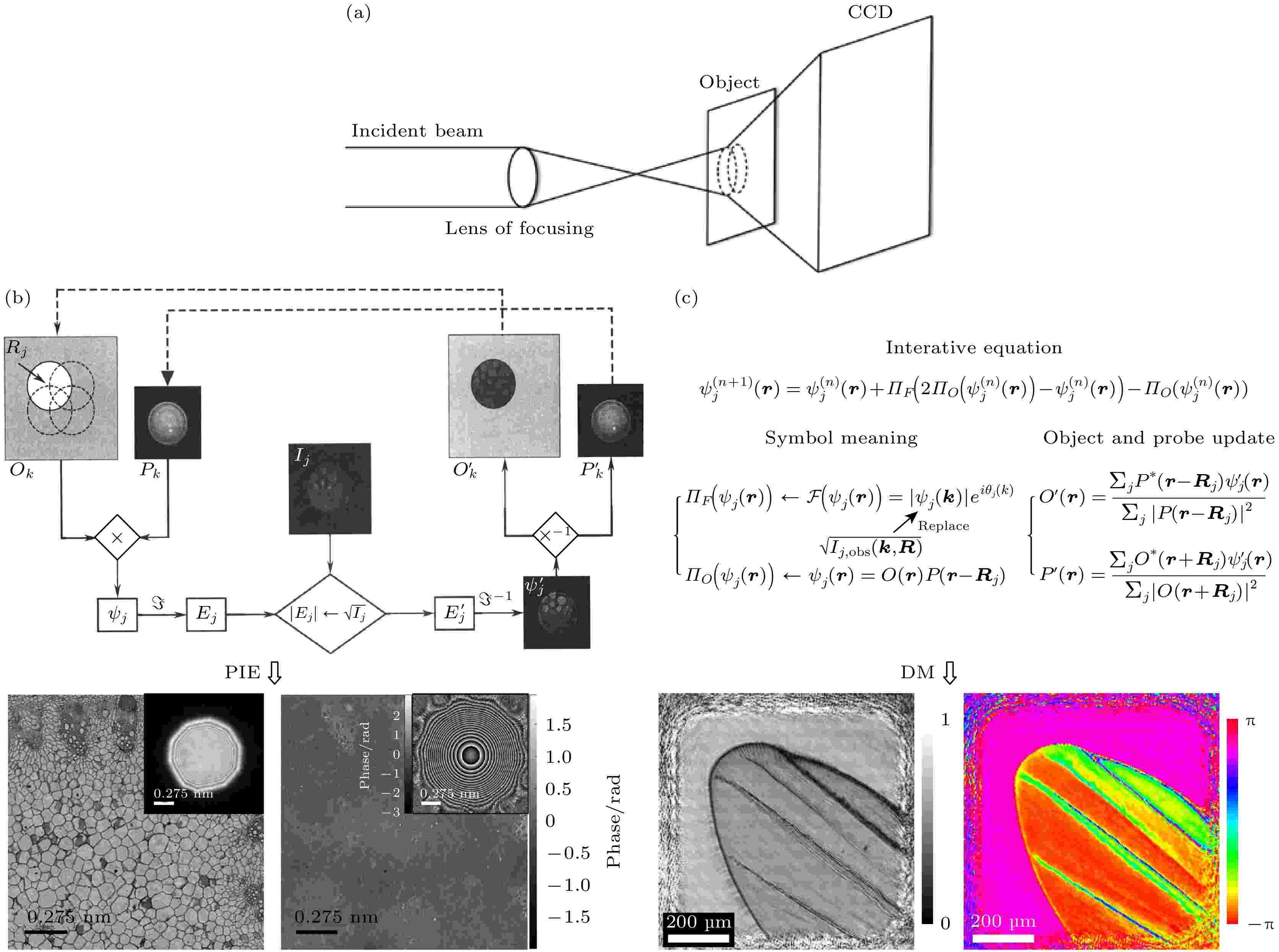
2023, 72 (5): 054202.
doi:10.7498/aps.72.20221889
Abstract +
With the development of synchrotron radiation technology and the improvement of light source coherence, ptychography has developed rapidly. Ptychography algorithm solves the problems of slow convergence and easily falls into the local optimal solution and stagnation of the traditional coherent diffraction imaging algorithm. It has the advantages of large imaging field of view, robustness of algorithm, high tolerance to error and wide range of applications, and is becoming a hot research direction in the field of coherent diffraction imaging. Ptychography reconstructs the complex amplitude distribution and illumination light of the sample by iterative algorithms, which can theoretically reach the resolution of the diffraction limit. It has excellent applications in the fields of wavefront detection, phase imaging and optical metrology. This paper first introduces the background of the proposed ptychography algorithm and briefly describes the problem of coherent diffraction imaging algorithm and its development, and then summarizes the development of ptychography algorithm in detail, mainly including the mainstream algorithm of ptychography and its kernel. This paper then describes in detail the improvement of algorithms corresponding to the improvement of the efficiency of ptychography experiments, correction of position errors and the effect of illumination light multi-modal, and elaborates the algorithm flow. After analyzing the possible intersection of diffraction imaging and neural networks in the field of artificial intelligence, this paper introduces new algorithms with combining ptychography with artificial intelligence. New algorithms with combining ptychography with neural networks will have new potential applications in generality, accuracy and robustness. Finally, a specific parallelization implementation of the ptychography algorithm and common software packages are presented. The logic for writing the parallelization of the algorithm implementation of each package and the corresponding advantages and disadvantages of the packages are described in detail. The characteristics and performance of each package are then listed for reference. This paper helps to establish a global perspective of the algorithm itself, artificial intelligence and computational methods in the field of ptychography, and presents an important reference for systematically developing the ptychography method.
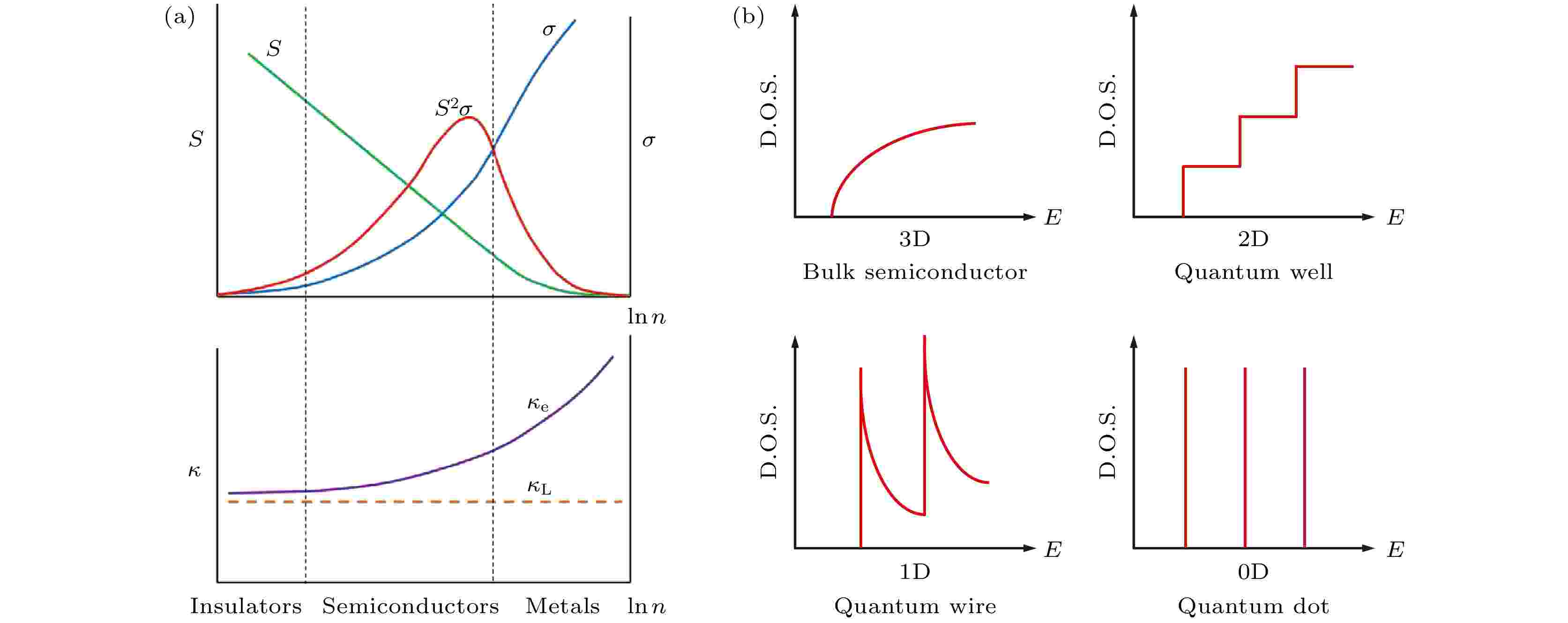
EDITOR'S SUGGESTION
2023, 72 (5): 057301.
doi:10.7498/aps.72.20222095
Abstract +
Nowadays, there are enormous amounts of energy wasted in the world, most of which is in the form of wasted heat. Thermoelectric effect, by converting heat energy into electricity without releasing dangerous substances, has aroused more and more interest from researchers. Since the discovery of graphene, more and more two-dimensional layered materials have been reported, which typically own superior electrical, optical and other physical properties over the bulk materials, and the development of the new theory and experimental technologies stimulates further research for them as well. In this work, first we introduce the measurement methods and techniques that are suitable for characterizing the thermoelectric properties of two-dimensional materials, and then discuss the relevant current challenging issues. Subsequently, graphene, transition metal disulfides, black phosphorus and other 2-dimensional materials in thermoelectric applications are introduced. Finally, we discuss the various strategies to improve the thermoelectric performance and the problems that need solving urgently.

EDITOR'S SUGGESTION
2023, 72 (5): 058801.
doi:10.7498/aps.72.20222019
Abstract +
Double junction tandem solar cells consisting of two absorbers with designed different band gaps show great advantage in breaking the Shockley-Queisser limit efficiency of single junction solar cell by differential absorption of sunlight in a wider range of wavelengths and reducing the thermal loss of photons. Owing to the advantages of adjustable band gap and low cost of perovskite cells, perovskite/crystalline silicon tandem solar cells have become a research hotspot in photovoltaics. We systematically review the latest research progress of perovskite/crystalline silicon tandem solar cells. Focusing on the structure of perovskite top cells, intermediate interconnection layers and crystalline silicon bottom cells, we summarize the design principles of high-efficiency tandem devices in optical and electrical aspects. We find that the optical and electrical engineering of each layer structure in perovskite/crystalline silicon tandem solar cells goes through the whole process of device preparation. We also summarize the challenges of limiting the further improvement of the efficiency of the perovskite/crystalline silicon tandem solar cells and the corresponding improvement measures, which covers the following respects: 1) Improving the balance betweenVocandJscof the broadband perovskite cell through additive engineering and interface engineering; 2) improving the bandgap matching between the electrical layers and reducing the carrier transport barrier through adjusting the work function or conductivity of layers; 3) improving the photocurrent coupling between sub-cells and the photocurrent of tandem solar cells by using light engineering and conformal deposition technology of perovskite cells. At present, there have been many technologies to improve the stability of perovskite solar cells, such as additive engineering and interface engineering, but the problem has hardly been solved. Therefore, improving the stability of broadband gap perovskite solar cells to the level of crystalline silicon solar cells will become an important challenge to limit its large-scale application. In terms of efficiency, the mass production efficiency of perovskite/crystalline silicon tandem solar cells is far lower than that of the laboratory level. One of the reasons is that it is difficult to achieve low-cost and deposition of uniform large area perovskite solar cells. Therefore improving the stability of broadband gap perovskite solar cells and developing low-cost large-area perovskite deposition technology will become extremely critical. Finally we look forward to the next generation of higher efficient low-cost tandem solar cells. We believe that with the increasing demand for higher efficiency photovoltaic devices, the triple junction solar cells based on the perovskite/crystalline silicon stack structure will become the future photovoltaics.
GENERAL
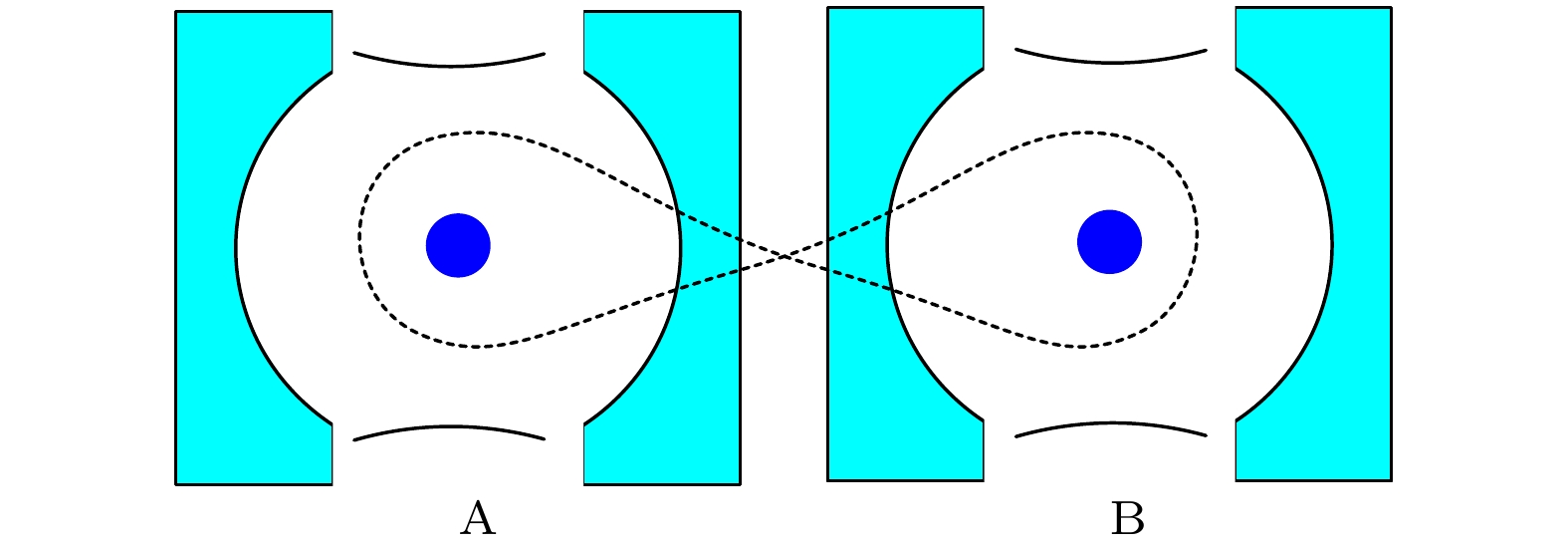
2023, 72 (5): 050301.
doi:10.7498/aps.72.20222218
Abstract +
Quantum nonlocality is one of the most fundamental characteristics of quantum theory. As a commonly used quantum state generated in experiment, the “X” state is a typical one in the research of open quantum systems, since it remains the stability of the “X” shape during the evolution. Using the Clauser-Horne-Harmony-Holt (CHSH) inequality, the quantum nonlocality testing of two “X” states associated with local transformation operations is studied under the Markov environment. The results show that in the phase damping environment, the two “X” states have the same CHSH inequality testing results with the increase of the evolution time. Moreover, the maximum of quantum nonlocality test of the two “X” states will decrease nonlinearly. When
$0.78 \lt F \lt 1$
, the maximum value
${S_m}$
of testing quantum nonlocality will gradually transition from
${S_m} \gt 2$
to
${S_m} \lt 2$
with the increase of the evolution time of the two “X” states, and the research on the quantum nonlocality test cannot be successfully carried out. In the amplitude damping environment, the “X” state obtained by the local transformation operation has a longer evolution time for successfully testing quantum nonlocality when
$F \gt 0.78$
. In particular, when
$F = 1$
, the “X” state with the density matrix
${\rho _W}$
cannot successfully test the quantum nonlocality after the evolution time
$\varGamma t \gt 0.22$
. For the “X” state with density matrix
${\tilde \rho _W}$
, the quantum nonlocality testing cannot be performed until the evolution time
$\varGamma t \gt 0.26$
. These results show that the local transformation operation of the “X” state is more conducive to the quantum nonlocality testing based on the CHSH inequality. Finally, the fidelity ranges of successfully testing the quantum nonlocality of the two “X” states in phase and amplitude damping environments are given in detail. The results show that on the premise of the successful testing of quantum nonlocality , the two types of “X” states evolving in the phase damping environment have a large range of valid fidelity. Meanwhile, for the same evolution time, the local transformation operation is helpful in improving the fidelity range of quantum nonlocality test in amplitude damping environment for “X” state with density matrix
${\rho _W}$
.

EDITOR'S SUGGESTION
2023, 72 (5): 050302.
doi:10.7498/aps.72.20221766
Abstract +
Gaussian boson sampling is one of the main promising approaches to realizing the quantum computational advantage, which also offers potential applications such as in dense subgraphs problem and quantum chemistry. However, the inevitable noise in experiment may weaken the quantum advantage of Gaussian boson sampling. Photon loss and photon partial indistinguishability are two major sources of noise. Their influence on the complexity of Gaussian boson sampling has been extensively studied in previous work. However, the phase noise of the input light source, a noise which is suitable for tailored for Gaussian boson sampling, has not been studied so far. Here, we investigate the phase noise of the input light source in Gaussian boson sampling through numerical simulation. We use the Monte Carlo method to calculate the output probability distribution under phase noise approximately. It is found that the phase noise of the light source can cause the input state to change from a Gaussian state into a non-Gaussian mixed state. For a given phase noise level, the fidelity of the non-Gaussian mixed state and the noise-free ideal state decreases monotonically as the mean photon number of input increases. Meanwhile, owing to the phase noise the deviation of the output probability distribution gradually increases with the number of detected photons increasing. Furthermore, the phase noise results in the capability of heavy sample generation (HOG), significantly decreasing. Finally, it is found that Gaussian boson sampling with photon loss is more tolerant to phase noise than the lossless case given that the mean photon number of input is the same. Our study is helpful in suppressing the phase noise in large-scale Gaussian boson sampling experiments.

2023, 72 (5): 050303.
doi:10.7498/aps.72.20222253
Abstract +
Plug-and-play discrete modulation continuous variable quantum key distribution can generate local oscillator light locally without using two independent lasers, and both signal light and local oscillator are generated from the same laser, which can effectively ensure the practical security of the system and have a completely identical frequency characteristic. In addition, this scheme has good compatibility with efficient error correction codes, and can achieve high reconciliation efficiency even at low signal-to-noise ratio. However, there exists large excess noise in the plug-and-play configuration based on the untrusted source model, which seriously limits the maximum transmission distance of the discrete modulation scheme. To solve this problem, we propose a plug-and-play discrete modulation continuous variable quantum key distribution based on non-Gaussian state-discrimination detection. That is to say, a non-Gaussian state-discrimination detector is deployed at the receiver. With adaptive measurement method and Bayesian inference, four non-orthogonal coherent states which are based on four-state discrete modulation can be unconditionally distinguished on condition that the error probability is lower than the standard quantum limit. We analyze the security of the proposed protocol by considering both asymptotic limit and finite-size effect. Simulation results show that the secret key rate and maximum transmission distance are significantly enhanced by using no-Gaussian state-discrimination detection even under the influence of the untrusted source noise compared with the original plug-and-play discrete modulation continuous variable quantum key distribution. These results indicate that the proposed scheme can effectively reduce the negative influence of the untrust source noise on the performance of the plug-and-play discrete modulation continuous variable quantum key distribution protocol. The proposed protocol can not only ensure the practical security of the system, but also achieve more efficient and longer transmission distance quantum key distribution.

2023, 72 (5): 050401.
doi:10.7498/aps.72.20221858
Abstract +
Sound field in fluid-saturated porous medium is closely related to the viscosity of fluid and the heterogeneity of porous medium. In order to improve the physical mechanism of wave propagation in porous medium and expand its application in borehole acoustic field, the shear stress of porous fluid and the heterogeneity of pore structure are considered. The wave theory in porous medium containing viscous fluid is deduced based on the Biot theory. The influence of porous medium parameters on slow shear wave is analyzed, and the dispersion and attenuation of elastic wave caused by shear stress balance in porous fluid under the influence of inhomogeneous pore structure are studied. The analytical solution of borehole acoustic field in porous medium containing viscous fluid is further derived. The phase velocity and attenuation of borehole mode waves in heterogeneous porous medium, and the waveform of borehole full wave are calculated. The influence of pore fluid viscosity on borehole full wave is analyzed. The results show that there are slow shear waves in the porous medium containing viscous fluid. The slow shear wave is characterized by low velocity and large attenuation. In heterogeneous porous medium, the balance process of shear stress related to slow shear wave not only leads to the dispersion and attenuation of fast P-wave, but also affects the propagation characteristics of borehole pseudo Rayleigh wave and Stoneley wave. In addition, the pore fluid viscosity has a great influence on the borehole Stoneley wave. The present work improves the physical mechanism of acoustic wave propagation in porous medium and provides theoretical guidance for the explanation and application of borehole acoustic waves in porous formations.
ATOMIC AND MOLECULAR PHYSICS
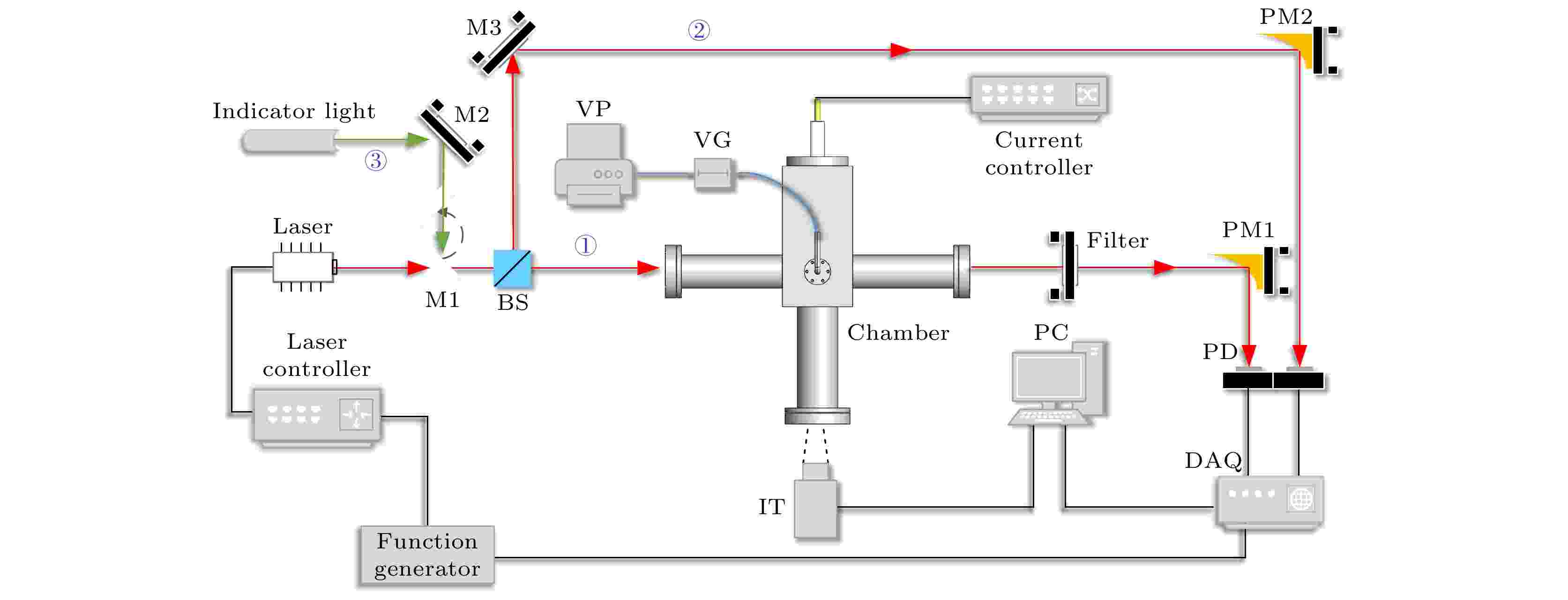
EDITOR'S SUGGESTION
2023, 72 (5): 053201.
doi:10.7498/aps.72.20221963
Abstract +
Rubidium (Rb) isotope analysis has important applications in geological exploration and environmental detection. Based on tunable laser atom absorption spectroscopy technology combined with thermal decomposition of the sample, a Rb isotope absorption spectroscopy measurement device is built to detect the Rb isotope ratio stability. And the atomic generator is designed by a new micro-channel array structure, which enhances atomic beam collimation capability, effectively suppresses the doppler effect of the spectrum, and improves the resolution of Rb isotope absorption spectrum. The device adopts tantalum metal to make the atomic generator with a diameter of 6 mm, and the micro-channel array with a diameter of 1 mm is stacked inside the atomic generator which can be heated resistively to 3000 ℃. In this experiment, the Rb carbonate sample is catalyzed to release Rb atom beam at a high temperature of 600 ℃, while a probe laser is used to obtain high resolution Rb absorption spectrum. The Rb isotope ratio (85Rb∶87Rb) of natural abundance Rb carbonate samples is 2.441±0.02 by combining the inversion of the spectral line parameters, the detection error is 5.9%, and the detection limit of87Rb is 1.76‰ (3σ). The experimental results show that the multi-microchannel structure reduces the linewidth of Rb atoms by 450 MHz (half height full width) compared with the counterparts of the single-channel structure, which can effectively distinguish the absorption characteristics of Rb isotopes. The device has a high detection accuracy and a high spectral resolution, which provides a possibility for the metal isotope abundance analysis, and has a broad application prospect.
ELECTROMAGNETISM, OPTICS, ACOUSTICS, HEAT TRANSFER, CLASSICAL MECHANICS, AND FLUID DYNAMICS
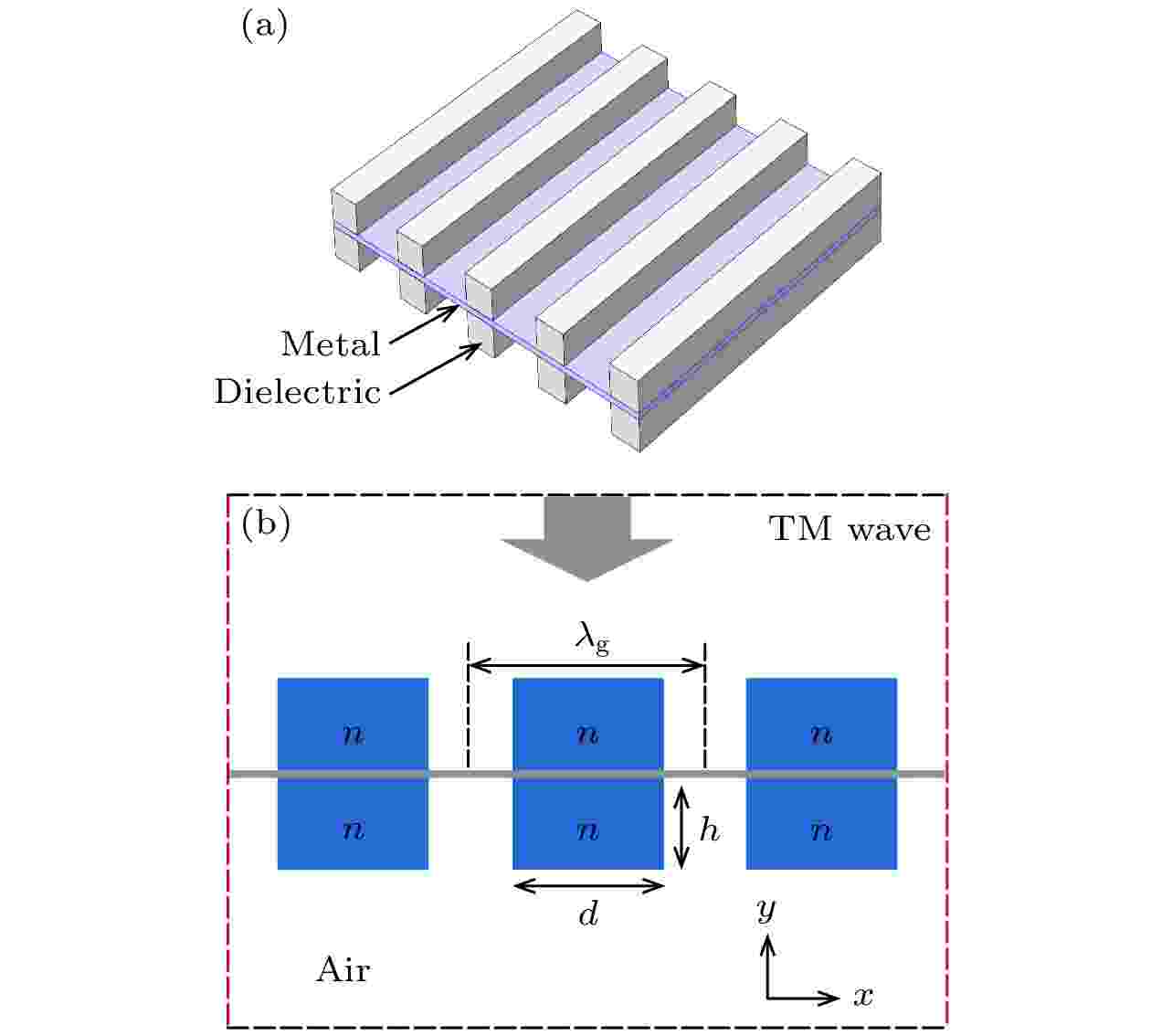
2023, 72 (5): 054201.
doi:10.7498/aps.72.20221701
Abstract +
The perfect absorption is achieved by the structure of a continuous metal film with symmetrical grating structure on both sides. The maximum absorption coefficient can reach 99.47% for a optimal structural parameters with a silver film thickness of 20 nm, a lattice constant of 400 nm, and a medium refractive index of 1.46. The full width of half maximum of the absorption line is about 2.53 nm, and the quality factorQis 296.06. When the absorption is perfect, the reflection and transmission of the incident light are effectively suppressed, and the phase gradient of the absorption coefficient reaches a maximum value. The perfect absorption is determined by the long-range surface plasma polariton (LRSPP) with a little transmission loss, long propagation distance and deep penetration depth. And the electric field is mainly distributed outside the silver film with a standing wave distribution. As the thickness of the silver film decreases, the line width of the absorption spectrum gradually decreases, while theQvalue and electric field strength increase. When the thickness drops to about 12 nm, the minimum line width is 0.98 nm and the maximumQvalue is 760.0. The sharp absorption curve and very high quality factor at the perfect absorption can be used in the design and application of the highly sensitive micro-nano sensor.
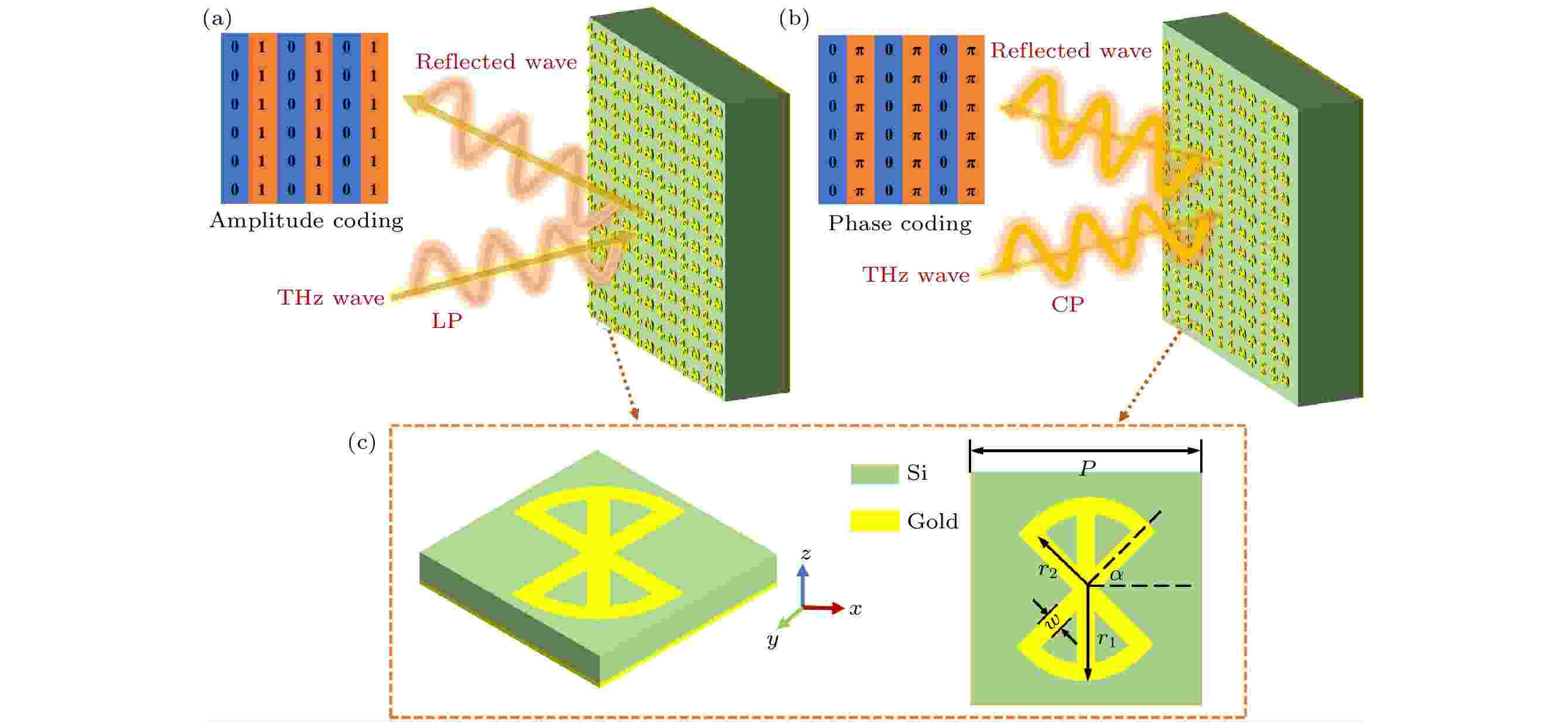
2023, 72 (5): 054203.
doi:10.7498/aps.72.20221962
Abstract +
Most of reported coding metasurfaces only use phase encoding or amplitude encoding to regulate electromagnetic waves, which limits the flexibility of terahertz wave regulation. In this work, a metasurface element structure is proposed. The metasurface element is composed of three layers, i.e. metal pattern structure layer, intermediate medium layer, and metal base layer. According to the geometric phase principle, the phase coverage in the 2π range can be achieved by rotating the metal pattern structure layer under the incidence of the circular-polarized terahertz wave. The metasurface element structure is arranged reasonably by using the phase coding, and the 1-bit and 2-bit phase coding metasurface are designed. First of all, the coding metasurface with interlacing “0” and “1” is designed to generate a double beam reflection under the vertical incidence of circular polarized terahertz waves, while the two-dimensional checkerboard coding metasurface with “0” and “1” generates a symmetrical four-beam reflection. In addition, the metasurface is designed to deflect the reflected beam, and the coding period is changed to design the metasurface to deflect the reflected beam to the specified angle, showing good flexibility. Finally, the convolutional operation is introduced to flexibly regulate the circular polarized beam, and the functions of beam splitting and reflection beam deflection are obtained. The amplitude coded metasurface is designed under theincidence of the online polarized terahertz wave, and the near-field imaging effect can be realized by the amplitude differentiation of polarization reflection. The designed amplitude coded metasurface realizes the function of imaging in space, presenting the designed “CJLU” pattern, which has different imaging effects at different observation locations. When the observation plane distance is 80 μm at the observation frequency of 1.22 THz, the near-field imaging effect is best. In conclusion, we propose a terahertz multibeam modulation reflection-coded metasurface, which combines geometric phase and amplitude variation to achieve different terahertz wave modulation functions under different polarization incident terahertz waves. The results from the simulated near-field radiation model and the far-field radiation model are both in agreement with the theoretical calculation predictions. The designed metasurface provides a degree of freedom method for terahertz wave polarization and phase manipulation, which greatly improves the efficiency of terahertz wave manipulation and has potential applications in terahertz systems.

2023, 72 (5): 054205.
doi:10.7498/aps.72.20222127
Abstract +
A low-noise single-frequency laser is a key component of the space-based gravitational wave detector, and the intensity noise of the laser directly affects the sensitivity of the space-based GW detector. In this work, we report a low-noise single-frequency laser designed for space-based gravitational wave detector. The laser is based on a master oscillator power amplifier (MOPA), which is designed to possess a low-power, narrow-linewidth seed laser acting as master oscillator (MO) and an all polarization-maintaining fiber amplifier acting as power amplifier (PA). The amplifier that uses a robust mechanical design consists of an Yb-doped double-clad fiber forward pumped by wavelength-locked 976 nm pump laser diode (LD) to achieve 2.13 W of output power and 70 dB of signal-noise ratio (SNR). To suppress the relative intensity noise (RIN) in a millhertz regime (1 mHz–1 Hz), we characterize the power stabilization of a pump diode laser based on a proportional-integral-derivative (PID) feedback control loop where an in-loop photodetector is used. The power fluctuation can be converted into the fluctuation of the current signal by the photodiode, the current signal is converted into the voltage signal and amplified by a transimpedance circuit. Then, the voltage signal is compared with the voltage reference signal, and the error signal is achieved to adjust real-timely the drive current of the pump laser diode. This is a good way to significantly suppress the RIN of a laser at low frequencies, but the measured RIN below 4 mHz is still higher than –60 dBc/Hz. In order to further suppress the RIN to lower than 4 mHz, an active precise temperature control technology is used to suppress the thermal noise from pump LD and fiber coupler. To assess the RIN milliertz regime, we design an RIN measurement system consisting of a high-precision signal acquisition card (24 bit) and a computer program based on LabVIEW. The measurement range of the system is 2 μHz–102.4 kHz and the frequency resolution up to 2 µHz, much better than the counterparts of commercial instruments. By stabilizing the fiber amplifier pump LD current and the temperature of pump LD and the temperature of fiber coupler, the out-of-loop RINs are measured to be –63.4 dBc/Hz@1 mHz and –105.8 dBc/Hz@1 Hz , and in a milliertz regime of 1 mHz–1 Hz, the RIN is below –60 dBc/Hz. The results show that the feedback control of the fiber amplifier pump LD current and the temperature control of the key devices can effectively suppress the RIN in the millihertz frequency band, which lays a foundation for further improving the intensity noise performance in the low frequency band.
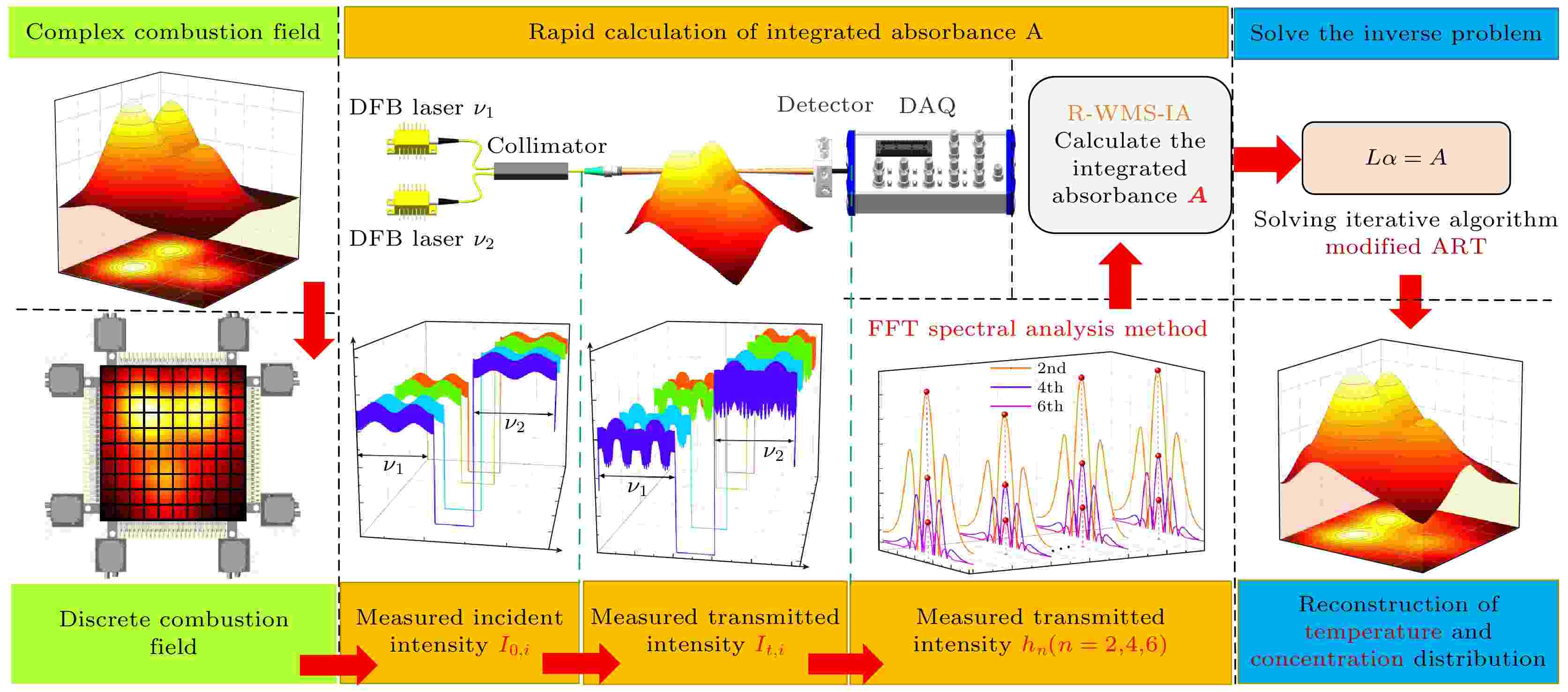
EDITOR'S SUGGESTION
2023, 72 (5): 054206.
doi:10.7498/aps.72.20221935
Abstract +
Conventional calibration-free wavelength modulation spectroscopy generally requires complex absorption spectrum simulations in combination with spectral databases and laser modulation parameters, placing high demands on the accuracy of a priori spectral parameters and hardware parameters. Meanwhile, inappropriate initial values can increase the computation time and even lead to local optimal solutions. In order to improve the computational efficiency, a rapid calibration-free wavelength modulation spectroscopy to obtain the integrated absorbance is presented in this work. First, this method is computationally efficient, requiring only algebraic calculations by using the 2nd, 4th, and 6th harmonic center peak height parameters to obtain the integrated absorbance, eliminating the need for computationally intensive harmonic fitting calculations. Secondly, this method has low dependence on the spectral database, requiring only line intensity and low-state energy level spectral parameters. Finally, this method is highly adaptable and does not require scanning the complete absorption spectral line shape, which solves the problem of incomplete harmonic signals caused by the conventional method at high temperature and high pressure due to the broadening of the absorption spectral line. This method has previously been used only for line-of-sight measurements at low-frequency experimental signals in stable environments, and for calculating the integrated absorbance at average temperature, concentration and pressure states. In this work, the method is applied to non-uniform complex combustion field tomography and combined with the proposed tomographic system to achieve online reconstructing temperature and concentration distributions. The accuracy and computational efficiency of the method in obtaining the integrated absorbance are verified by numerical simulations and experiments on the butane burner flame. The results show that the presented method is consistent with the reconstructed distribution compared with the conventional wavelength modulation method, with a maximum relative deviation of only 0.94% from the measurement and 3.5% from the thermocouple measurement, verifying the accuracy of the method. The computational efficiencies of the two methods for obtaining the integrated absorbance are analyzed. The average calculation time per path is 0.15 s for the present method and 21.10 s for the conventional method. The calculation efficiency of the present method is at least two orders of magnitude higher than that of the conventional method, which provides a fast and reliable research method and technical means to realize the industrial-grade online reconstruction of temperature and concentration distribution of combustion fields.

2023, 72 (5): 054208.
doi:10.7498/aps.72.20222412
Abstract +
We propose a ring laser array structure and study the Talbot effect. By comparing with the one-dimensional laser array, the near-field distribution of the identical intensity of the ring laser array without edge effect is obtained, which can be more conducive to improving the capability of the external cavity phase locking of lasers. In this paper, Talbot effect and self imaging condition of ring laser array in polar coordinates are calculated by using Gyrator canonical transformation. The sub-image distribution at the fractional Talbot distance is further analyzed. The optical profile and phase distribution of the ring laser array at the fractional Talbot distance are simulated, which are mutually verified with the theoretical calculation results. At a quarter of the Talbot distance, the number of sub-images is twice that of the emitters. The light intensities of the sub-images are identical, and thedifference in phase between adjacent sub-images is
${\pi }/{2}$
. At half of the Talbot distance, the number of sub-images is the same as that of the emitters, while the spatial position of sub-image is shifted by half a cycle along the angular direction. Moreover, the sub-images with twice the number of the emitters are present in three quarters of the Talbot distance. The light intensities of the sub-images are identical and the difference in phase between adjacent sub-images is
$- {\pi }/{2}$
. Further, the Talbot images with the same spatial and phase distribution as the emitters are generated along the angular direction at the Talbot distance. The optical profile and phase distribution of one dimensional laser array at the fractional Talbot distance are also simulated by FDTD Solutions for comparison. It is found that the edge effect of one-dimensional laser array leads to the uneven distribution of near-field light intensity, in which the intensity of light spot on the edge of array is significantly lower than that in the center of array. While the Talbot sub-images of ring laser array with identical light intensity are obtained. Therefore, We consider that the ring laser array can effectively eliminate the edge effect. The results are helpful in studying the external cavity phase locking of ring laser arrays and its applications in the field of high brightness coherent laser and quantum measurement.

2023, 72 (5): 054301.
doi:10.7498/aps.72.20222011
Abstract +
In order to solve the problem of low frequency noise of engine, based on the principle of dual port asymmetric sound absorber, a kind of gradually changing size sound absorbing metasurface is designed to reduce the noise of engine acoustic liner. Firstly, the theoretical analysis model and simulation analysis model of the asymmetric resonance sound absorber are established, the noise reduction mechanism is revealed, and the influencing factors of the noise reduction effect are analyzed. Then an acoustic metasurface acoustic liner is designed based on the asymmetric resonance sound absorber. The noise reduction effect of the acoustic liner is analyzed in depth by using three methods: full model theoretical calculation, equivalent impedance theoretical calculation and COMSOL finite element simulation. Then, the parameters of this structure are optimized, and the influence of flow velocity on the noise reduction effect is considered by using the full model theoretical calculation and equivalent impedance theoretical calculation. The research results show that the acoustic metasurface acoustic liner designed based on asymmetric sound absorber can achieve noise reduction effect of more than 3 dB in a frequency band range from 252 to 692 Hz when the thickness is only 2.5 cm (only 1/54 of the corresponding wavelength of 252 Hz), which provides a new idea for designing engine noise reduction.
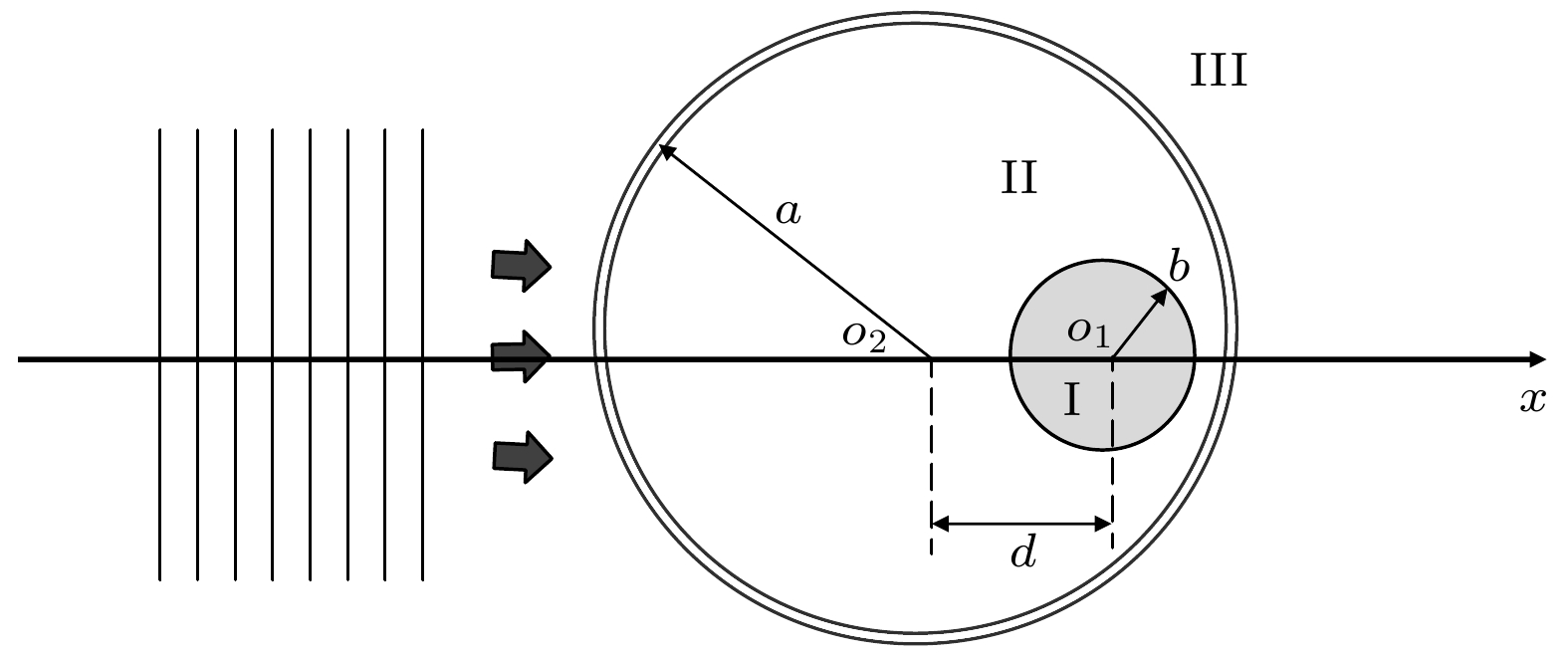
2023, 72 (5): 054302.
doi:10.7498/aps.72.20222155
Abstract +
Based on the application of acoustic waves in cell manipulation, a model consisting of an elastic spherical shell and eccentric droplet is established to simulate a eukaryotic cell and analyze the acoustic radiation force (ARF) on the cell. In this work, we derive an exact expression for the ARF on the liquid-filled spherical shell. The influence of eccentric distance, radius of the eccentric droplet and impedance of the medium inside the liquid-filled spherical shell on the ARF are analyzed numerically. The results show that the ARF is very sensitive to the position and size of the eccentric droplet. As the eccentricity of the eccentric droplet increases, the ARF becomes greater. In a low frequency region (ka<3) the resonance peak point increases, and the position of the curve ventral point shifts to the high frequency region (ka>3) with the increase of the radius of the eccentric droplet. The effect of the position variation on the ARF is more significant than that of the radius change, and both of their effects will be superimposed on each other. The ARF, as a function ofka,is mainly affected by the variation of the nucleus characteristic impedance. The ARF amplitude aroundka= 5 increases and the position of the ventral point tends to shift rightwards with the enlargement of the nucleus impedance. Therefore, the radiation response at a certain frequency or in a cell size range can be enhanced when the nucleus impedance increases. The results of this study provide theoretical basis for the cell sorting and targeted therapy.

2023, 72 (5): 054303.
doi:10.7498/aps.72.20221717
Abstract +
Most of shallow water geoacoustic inversions based on modal dispersion cannot reliably estimate the deep geoacoustic parameters. Because these studies focused on the dispersions of water waves but ignored the dispersions of ground waves. Therefore, in this paper a Bayesian geoacoustic inversion is studied based on wideband modal dispersions of water waves and ground waves. Firstly, the modal dispersion curves with Airy phase components are discussed. Secondly, the Bayesian inversion theory and a novel sample-efficient inference algorithm, namely Variational Bayesian Monte Carlo, are introduced briefly. In the Bayesian inversion, the posterior probability densities of unknown parameters are inferred, which can provide the prediction closest to the observation data and the uncertainty of the prediction. Considering that the forward acoustic model is computationally intensive, the posterior analysis is carried out by using the Variational Bayesian Monte Carlo method. It is performed by finding the variational distribution closest to the target distribution and requires less computation time than the Markov chain Monto Carlo method. In the simulation study, a range-independent two-layer seabed, including the sediment layer and basement layer, is modeled, on the assumption that the water column is homogeneous. The function of shear wave in waveguide is ignored. The compressional sound speed of the sediment layer varies linearly fromc1Utoc1Lbetween 0 andh1, while other geoacoustic parameters are constant. By comparing the inversion results with and without the information of ground waves for different signal-to-noise ratios, it can be concluded that the deep geoacoustic parameters are more sensitive to the dispersions of ground waves. And then, a shallow-water experimental study is carried out in the Bohai Sea of China. The average water depth is about 20 m. The wideband pulse signals are recorded by a hydrophone with a sensitivity of –170 dB re 1 V/μPa. The received signals include well-defined Airy phase components, and the modal dispersion curves of water waves and ground waves are extracted accurately. The experimental results indicate that the Bayesian inversion combining water and ground wave dispersions can not only estimate the deep geoacoustic parameters reliably, but also reduce the inversion uncertainties of other model parameters, such as the shallow geoacoustic parameters, water depth, etc. The estimated source-receiver range and water sound speed are close to their measured values. The modal dispersion curves predicted by the posterior mean samples are in good consistence with those extracted from the experimental data in different ranges. In addition, the good forecast of transmission loss also demonstrates the reliability of the joint inversion.

2023, 72 (5): 054304.
doi:10.7498/aps.72.20222110
Abstract +
The variable thickness annular radial piezoelectric ultrasonic transducer can realize impedance transformation and energy concentration, has the advantages of large radiation area and full directivity, and is widely used in power ultrasound, underwater acoustic and other fields. Because solving complex variable thickness metal ring radial vibration wave equation is more difficult, in this paper, the radial vibration of metal rings with variable thickness is transformed into the superposition of the radial vibrations of N metal rings with equal thickness by using the transfer matrix method. The equivalent circuit diagram, the resonance frequency equation and the expression of the displacement amplification coefficient of the radial vibration of the metal thin ring with arbitrary thickness are obtained. The relationship between the displacement amplification coefficient and the geometric size of the cone, power function, exponential and catenary metal rings is analyzed. On this basis, the equivalent circuit and resonance frequency equation of radial vibration of piezoelectric ultrasonic transducer which is composed of a metal ring with variable thickness and a piezoelectric ring with equal thickness are derived. In order to verify the correctness of the theoretical results, the finite element software is used in simulation, and the numerical solutions of the first and second order resonance frequency and displacement amplification coefficients are in good agreement with the theoretical solutions. In this paper, the universal solution of radial vibration of metal ring with arbitrary variable thickness is given, which provides theoretical guidance for designing and optimizing the radial piezoelectric ultrasonic transducers.
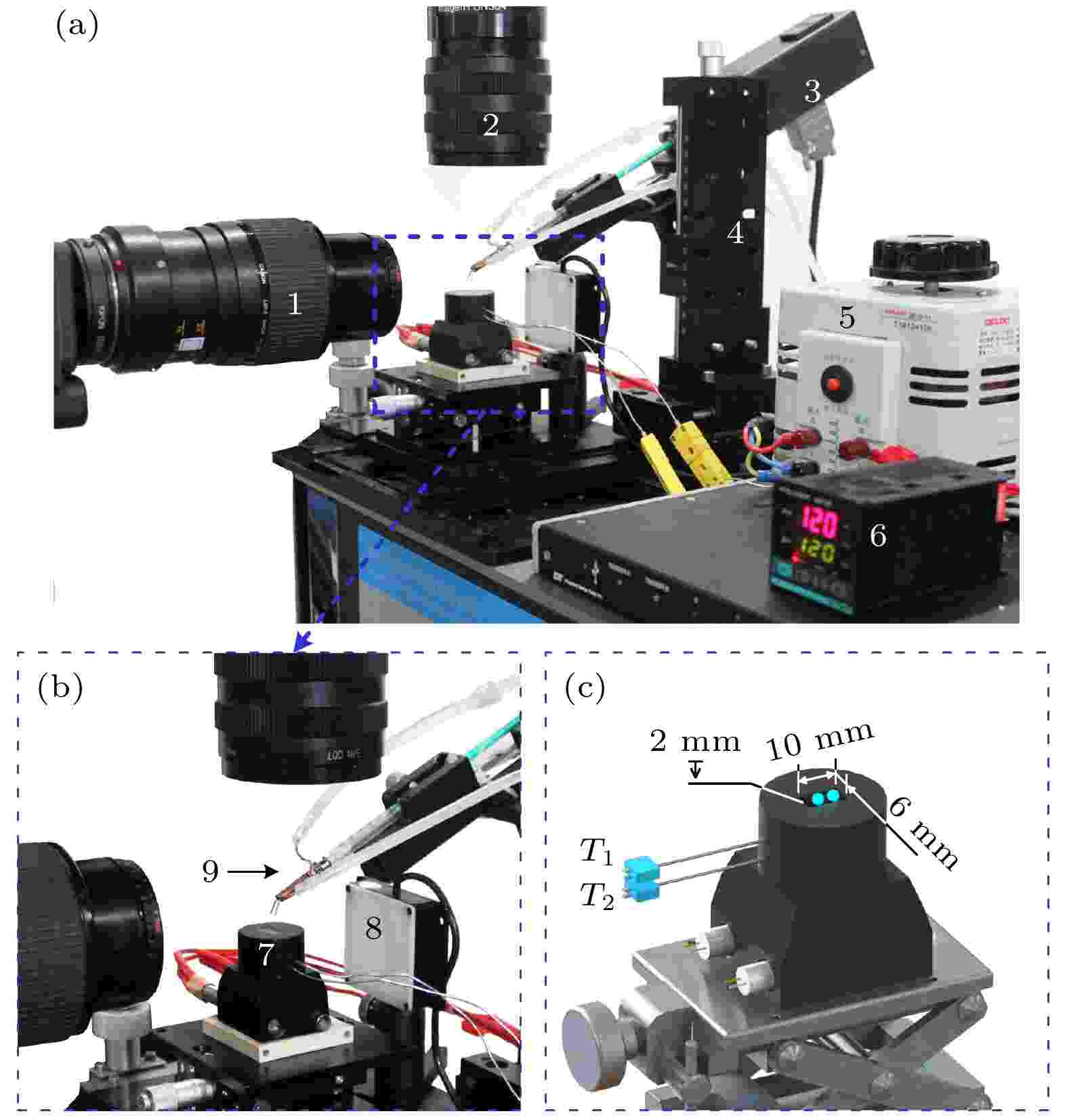
2023, 72 (5): 054401.
doi:10.7498/aps.72.20221822
Abstract +
Evaporation of droplets on a hot oil surface is a natural phenomenon. However, most of existing studies focus on the evaporation of a single droplet, and the evaporation of multiple droplets is insufficiently understood. Here, we explore the Leidenfrost evaporation of two identical FC-72 droplets on the surface of a hot oil bath. The oil temperature ranges from 73.6 to 126.6 ℃, and the evaporation of droplets each with an initial diameter of 1.5 mm is recorded by an infrared thermographer and a high-speed camera. The shallow oil depth keeps the oil temperature uniform relatively in the slot compared with that in the deep liquid pool due to the larger ratio of the surface area for copper-oil contact to the slot volume. We find that the neighboring droplets evaporate in three stages: non-coalescing, bouncing, and separating. The radius of neighboring Leidenfrost droplets follows the power lawR(t)~(1−t/τ)n, whereτis the characteristic droplet lifetime andnis an exponent factor. Moreover, the diffusion-mediated interaction between the neighboring droplets slows down the evaporation process compared with the action of isolated Leidenfrost droplet and leads to an asymmetric temperature field on the droplet surface, thereby breaking the balance of the forces acting on the droplets. A simple dual-droplet evaporation model is developed which considers four forces acting horizontally on the droplet, namely, the Marangoni force resulting from the non-uniform droplet temperature, the gravity component, the lubrication-propulsion force, and the viscous drag force. Scale analysis shows that the Marangoni force and gravity component dominate dual-droplet evaporation dynamics. In the non-coalescence stage, the gravity component induces the droplets to attract each other, while the vapor film trapped between droplets prevents them from directly contacting. When the droplets turn smaller, the gravity component is insufficient to overcome the Marangoni force. Hence, the droplets separate in the final evaporation stage. Finally, we conclude that the competition between Marangoni force and gravitational force is the origin of the bounce evaporation by comparing the theoretical and experimental transition times at distinct stages. This study contributes to explaining the complex Leidenfrost droplet dynamics and evaporation mechanism.
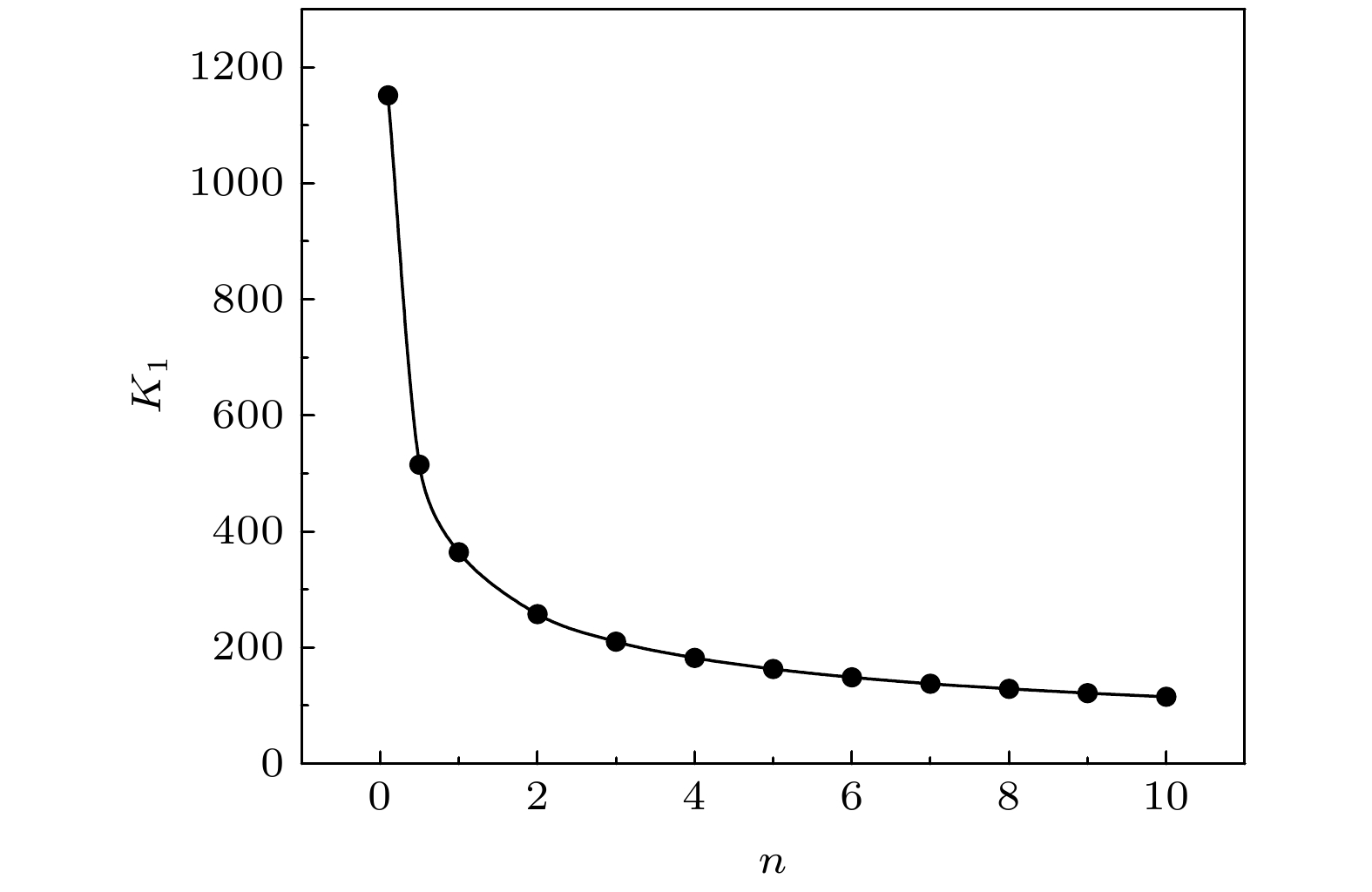
2023, 72 (5): 054701.
doi:10.7498/aps.72.20221281
Abstract +
Wave-wave resonance mechanism plays a fundamental and prominent role in the process of energy transfer and distribution, whether it is in microscopic or macroscopic matter. For the most extensive and intuitive ocean surface wave motion on earth, it is bound to be even more so. Can we extract the general wave-wave resonance law from it, especially the most special and brief resonance law for single wave train? To this end, according to a set of classical methods proposed by Phillips for initiating modern water wave dynamics with the specific 4-wave resonance conditions, and starting from the basic governing equations of ocean deep-water surface capillary-gravity waves, the first-order differential equation, and the second-, third- and fourth-order integral differential ones, which are becoming more and more complex but tend to be complete, of the Fourier components of free surface displacement are respectively given by the Fourier-Stieltjes transformation and perturbation method. Under a set of symbol system, which is self-created, self-evident and concise, these equations are solved in turn to obtain the first-order free surface displacement of single wave train, the Fourier coefficients of the second-, third- and fourth-order non-resonant and resonant free surface displacements, and the second-, third- and fourth-order resonant conditions, thus leading to the general nth-order self-resonance law of single wave train. This completely reveals the rich connotation of single wave resonance dynamics of ocean surface capillary-gravity waves, effectively expands the application range of the classical single wave resonance solutions given by Phillips for ocean surface gravity waves, lays the foundation for depicting single and multiple resonance interaction mechanisms of double and multi-wave trains of ocean surface waves, and so provides a typical example for the exploration of single-wave resonance law in all wave fields.
PHYSICS OF GASES, PLASMAS, AND ELECTRIC DISCHARGES
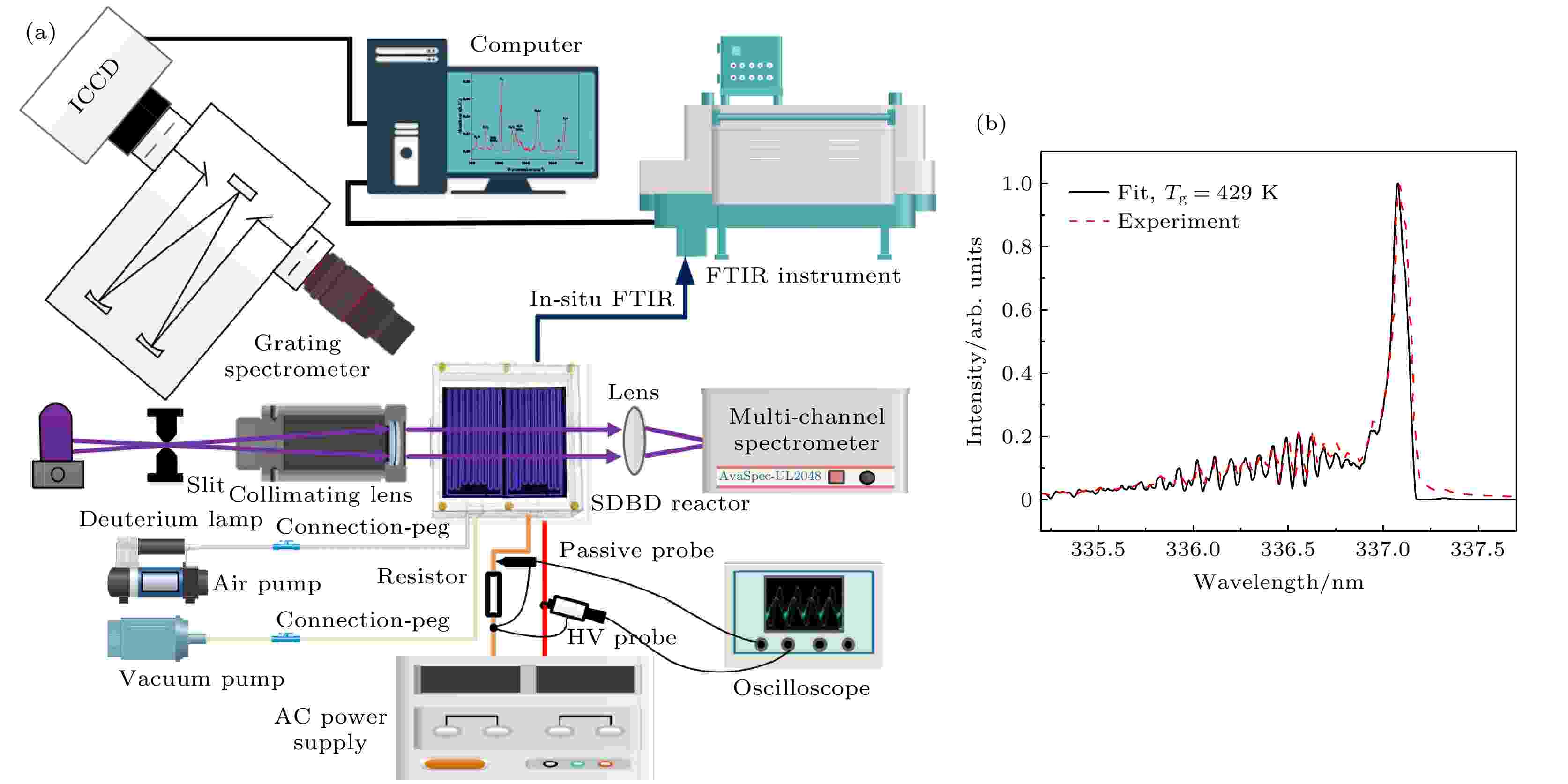
EDITOR'S SUGGESTION
2023, 72 (5): 055201.
doi:10.7498/aps.72.20222236
Abstract +
To gain an insight into the interaction mechanism among the gaseous products of atmospheric pressure air plasma, a surface dielectric barrier discharge is used as a study object. The dynamic processes of characteristic products (nitric oxide NO and ozone O3) are measured by in-situ Fourier infrared spectroscopy and UV absorption spectroscopy. The real energy density of the plasma is calculated by Lissajous figure and ICCD optical image. The gas temperature is obtained by fitting the emission spectrum of the second positive band of the nitrogen molecule. The results show that the real energy density and gas temperature are highly positively correlated with the applied voltage and frequency. Higher applied voltages and frequencies can lead to lower peak absorbance of O3and higher absorbance of NO, and accelerate the conversion of the products from O3-containing state into O3-free state. The microscopic mechanism of the product change is revealed by analyzing the effects of the real energy density and gas temperature on the major generation and quenching chemical reactions of the characteristic products. The analysis points out that there are two major reasons for the disappearance of O3, i.e. the quenching effect of O and O/O2excited state particles on O3and the quenching effect of NO on O3. And the mechanism that the disappearance of O3accelerates with the increase of energy density and gas temperature, is as follows. The increase of real energy density means that the energy injected into the discharge region is enhanced, which intensifies the collision reaction, thereby producing more energetic electrons and reactive oxygen and nitrogen particles. Since the discharge cavity is gas-tight, the rapid generation of O leads to a rapid increase in the ratio of O to O2, which accelerates the decomposition of O3; besides, the gas temperature is raised due to the intensification of the collision reaction. Whereas the gas temperature can change the rate coefficients of the chemical reactions involving the excited state particles of nitrogen and oxygen to regulate the production and quenching of the products. The increase of gas temperature has a negative effect on O3. The higher the gas temperature, the lower the rate of O3generation reaction is but the higher the rate of dissociation, which is thought to be the endogenous cause of the rapid disappearance of O3. In contrast, the gas temperature rising can significantly elevate the reaction rate of NO production and reduces its dissociation rate. This contributes to the faster production of massive NO, resulting in an accelerated quenching process of NO to O3, which can be considered as the exogenous cause of the rapid disappearance of O3. In a word, the present study contributes to a better understanding of the physico-chemical process in atmospheric pressure low-temperature plasma.
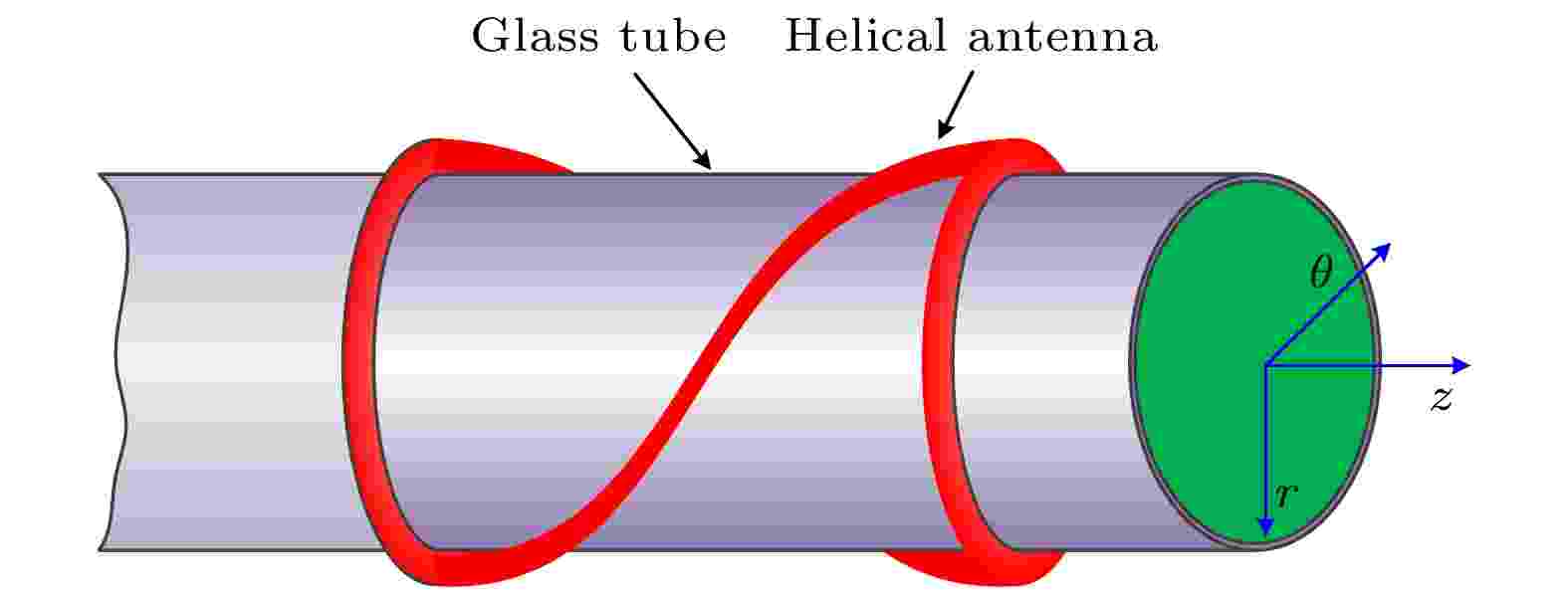
2023, 72 (5): 055202.
doi:10.7498/aps.72.20222048
Abstract +
As the core issue in helicon discharge, the physical mechanism behind the high ionization rate phenomenon is still not fully understood. Based on the warm plasma dielectric tensor model which contains both the particle drift velocity and temperature anisotropy effect, by employing the general dispersion relation of electromagnetic waves propagating in magnetized and uniform plasma with typical helicon discharge parameter conditions, wave mode propagation characteristic and collisional, cyclotron and Landua damping induced wave power deposition properties of azimuthally symmetric mode are theoretically investigated. Systematic analysis shows the following findings. 1) Under typical helicon plasma parameter conditions, i.e. wave frequencyω/(2π)=13.56 MHz, ion temperature is one tenth of the electron temperature, and for a given magnetic fieldB0(or wave frequencyω), there exists a critical wave frequencyωcr(or magnetic fieldB0,cr), above which (or belowB0,cr) the damping of then =1, 2, 3 cyclotron harmonics begins to increase sharply. 2) For the electron temperature isotropic case, the attenuation constants of different harmonics start to increase significantly and monotonically at different thresholds of magnetic field, while the phase constant abruptly increases monotonically from the beginning of the parameter interval. On the other hand, for the electron temperature anisotropic case, both the phase constant and attenuation constant have peaking phenomenon, i.e. the attenuation constant begins to increase sharply at a certain value ofB0and meanwhile the phase constant presents a maximum value near the same value of magnetic field, thus the phase constant starts to keep constant at a certain value ofB0and meanwhile the attenuation constant has a maximum value near this same value of magnetic field. 3) For the wave power deposition properties, under electron temperature anisotropy conditions, power deposition due to collisional damping of Trivelpiece-Gould (TG) wave plays a dominant role in a low field (B0= 48 Gs) (1 Gs = 10–4T); by considering the electron finite Larmor radius (FLR) effect, the power deposition of TG wave presents a maximum value at a certain point of parallel electron temperatureTe,//; with the decrease ofTe,⊥/Te,//, the maximum value of power deposition increases gradually. All these findings are very important in further revealing the physical mechanism behind the high ionization rate in helicon plasma.
CONDENSED MATTER: STRUCTURAL, MECHANICAL, AND THERMAL PROPERTIES

2023, 72 (5): 056101.
doi:10.7498/aps.72.20221581
Abstract +
The materials with low thermal conductivity (κ) are both fundamentally interesting and technologically important in applications relevant to thermal energy conversion and thermal management, such as thermoelectric conversion devices, thermal barrier coatings, and thermal storage. Therefore, understanding the physical mechanisms of glass-like heat conduction in crystalline materials is essential for the development and design of low-κmaterials. In this work, the microscopic phonon mechanism of glass-like lowκin binary simple crystal Yb3TaO7with fluorite structure is investigated by using the equilibrium molecular dynamics, phonon spectral energy density, and lattice dynamics. Meanwhile, the weberite-structured Yb3TaO7is also mentioned for comparison. The calculatedκindicates that fluorite Yb3TaO7has a glass-like lowκwhile weberite Yb3TaO7has a crystalκ. Such a lowκin fluorite Yb3TaO7is mainly due to the large difference in interatomic force between O-Yb and O-Ta. This different atomic bonding can significantly soften the phonon mode and thus limit phonon transport. To further describe the microscopic phonon thermal conduction, the single-channel model based on the phonon gas model is first used to calculate the totalκ. However, the single-channel model significantly underestimates theκ, suggesting the presence of non-normal phonons in Yb3TaO7. Based on this, vibrational mode decomposition is conducted throughout the entire phonon spectrum of fluorite- and weberite-type Yb3TaO7. It is found that most modes in fluorite Yb3TaO7fall in the Ioffe–Regel regime and exhibit a strongly diffusive nature. Such diffusive modes cannot be described by the phonon gas model. Based on the decomposed phonon modes, the dual-channel model involving diffusive mode and propagating mode is used to describe the phonon thermal conduction, by which the obtained results accord well with the experimental values. The vast majority (> 90%) of heat in fluorite Yb3TaO7is found to be transported by diffusive modes rather than propagating modes. Consequently, theκof fluorite Yb3TaO7increases with temperature rising, exhibiting a unique glass-like nature. In particular, contrary to conventional wisdom, the optical phonon mode in fluorite Yb3TaO7plays a significant or even decisive role in thermal conduction, which could serve as a new physical factor to adjustκin solid materials. Overall, the new understanding of the link between chemical bonding and glass-likeκcan contribute to the development and design of low-κmaterials.
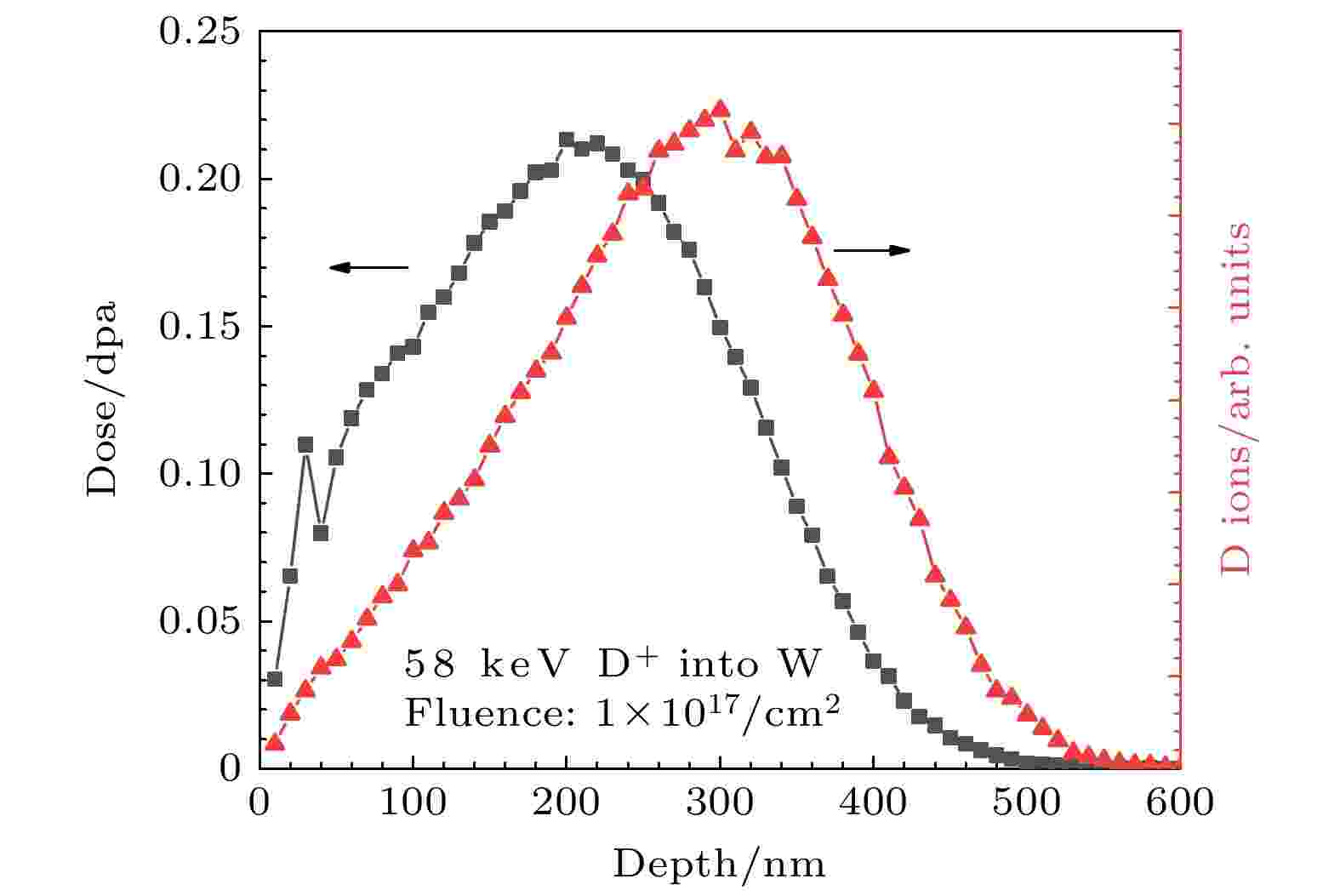
EDITOR'S SUGGESTION
2023, 72 (5): 056801.
doi:10.7498/aps.72.20222124
Abstract +
Tungsten is an important candidate of plasma-facing material for fusion reactors. Its irradiation response, especially the post-irradiation annealing (PIA) behavior needs further investigating. In addition, the practice of the “inside-outside” contrast method of determining the characteristics of irradiation induced dislocation loops has not been utilized frequently, and the present research serves as an example to present some practical considerations. In the present work, a tungsten thin-foil specimen is irradiated at 400 ℃ with 58 keV D+to a final fluence of 1× 1017cm–2, corresponding to a dose of about 0.1 dpa. The specimen is prepared through the electro-polishing method by using a NaOH based electrolyte. The ion irradiation is carried out directly on the electro-polished specimen. The irradiated specimen is followed by isothermal annealing at 900 ℃ for 1 h. The as-irradiated and post-irradiation annealing modified defects are investigated with a transmission electron microscope (TEM) operated at 200 kV. The irradiation defects are characterized by using TEM bright-field imaging for the same imaging field with differentgvectors around the three major zone axes: the [001], [111], and [011] zone axis of the body-center cubic lattice of W. For eachgvector, the ±gare characterized, and the corresponding contrast-extinctions and “inside-outside” contrasts of selected dislocation loops are identified. The indices of thegvectors around different zone axes are assigned consistently with the Kikuchi map. As a result, the D+irradiation increases a fine distribution of dislocation loops with an average size of (11.10±5.41) nm and a bulk density of 2.40×1022/m3. Voids are not observed obviously. The post-irradiation annealing causes the loop size to increase and the loop density to decrease, with numbers of (18.25±16.92) nm and 1.19×1022/m3, respectively. Through the contrast-extinction analysis, the dislocation loops in the irradiated and annealed specimen are identified to bea/2
$\langle {111} \rangle$
-type dislocation loops. The post-irradiation annealing also causes the coalescence of large loops and forms large irregular-shaped dislocation loops. Voids with typical sizes of 1–2 nm are also observed in the annealed specimen. The PIA modified microstructure is consistent with the stage IV or stage V characterization of classical PIA induced microstructures. Through the “one-step” inside-outside contrast method, the dislocation loops are identified as an interstitial type. The influcing factors for the “one-step” method are discussed and the importance of consistent indexing is also noted.
CONDENSED MATTER: ELECTRONIC STRUCTURE, ELECTRICAL, MAGNETIC, AND OPTICAL PROPERTIES

2023, 72 (5): 057101.
doi:10.7498/aps.72.20221493
Abstract +
Rashba spin splitting and quantum spin Hall effect have attracted enormous interest due to their great significance in the application of spintronics. According to the first-principles calculation, we propose a two-dimensional hexagonal lattice material H-Pb-Cl, which realizes the coexistence of giant Rashba spin splitting and quantum spin Hall effect. Owing to the break of space inversion symmetry and the existence of intrinsic electric field, H-Pb-Cl has a huge Rashba spin splitting phenomenon (αR= 3.78 eV·Å), and the Rashba spin splitting of H-Pb-Cl(–16%—16%) can be adjusted by changing the biaxial stress. By analyzing the electronic properties of H-Pb-Cl, we find that H-Pb-Cl has a huge band gap near the Fermi surface (1.31 eV), and the topological invariantZ2= 1 of the system is caused by the inversion of s-p orbit, which indicates that H-Pb-Cl is a two-dimensional topological insulator with a huge topological band gap, and the gap is large enough to observe the topological edge states at room temperature. In addition, we further consider the effect of BN and graphane substrates on the topological band gap of H-Pb-Cl by using the H-Pb-Cl (111)-(1×1) /BN (111)-(2×2) and H-Pb-Cl(1×1)/ graphane (2×2) system, and find that the lattice mismatch between H-Pb-Cl (5.395 Å) and BN (2.615 Å) and between H-Pb-Cl (5.395 Å) and graphane (2.575 Å) are about 3% and 4.5%, respectively. According to our calculation results, H-Pb-Cl still retains the properties of topological insulator under the effect of spin orbit coupling, and is not affected by BN nor graphane. Our results show that the nontrivial topological band gap of H-Pb-Cl can be well preserved under both biaxial stress effect and substrate effect. In addition, H-Pb-Cl can well retain the nontrivial topological band gap under the stress of –16%–16%, and thus there are many kinds of substrate materials used to synthesize this material, which is very helpful in successfully realizing preparation experimentally. Our research provides a promising candidate material for exploring and realizing the coexistence of Rashba spin splitting and quantum spin Hall effect. And the coexistence of giant Rashba spin splitting and quantum spin Hall effect greatly broadens the scope of potential applications of H-Pb-Cl in the field of spintronic devices.

2023, 72 (5): 057102.
doi:10.7498/aps.72.20222058
Abstract +
Two-dimensional (2D) niobium silicon telluride (Nb2SiTe4) with good stability, a narrow band gap of 0.39 eV, high carrier mobility and superior photoresponsivity, is highly desired for applications in mid-infrared (MIR) detections, ambipolar transistors. Intensive investigations on its ferroelasticity, anisotropic carrier transport, anisotropic thermoelectric property, etc., have been reported recently. Motivated by the above prominent properties and promising applications, we systematically study the electronic properties of single-layer (SL)A2BX4analogues (A= V, Nb, Ta;B= Si, Ge, Sn;X= S, Se, Te) and find a band-gap anomaly with respect to anion change, which differs from conventional 2D metal chalcogenide. In conventional binary chalcogenide, when cations are kept fixed, the bandgap tends to decrease as the atomic number of anions in the same group increases. However, in SLA2BX4, as atomic number of anions increases, its bandgaps tend to increase, with cations kept fixed. In order to find the underlying mechanism of such an abnormal bandgap, using first-principles calculations, we thoroughly investigate the electronic structures of Nb2SiX4(X= S, Se, Te) surving as an example. It is found that the valance band maximum (VBM) and conduction band minimum (CBM) are mainly derived from the bonding and antibonding coupling between Nb 4d states. The bandwidth of Nb 4d states determines the relative value of the band gap in Nb2SiX4. We demonstrate that the band gap is largely influenced by the competition effect between Nb—Nb and Nb—Xinteractions in Nb2SiX4. As the anion atomic number increases, the Nb—Nb bond length increases, yielding an increased bandwidth of Nb 4d state and a smaller bandgap of Nb2SiX4. Meanwhile, as Nb—Xbond length increases, the bandwidth of Nb 4d however decreases, yielding a larger bandgap. The interaction between Nb andXshould be dominant and responsible for the overall bandgap increase of Nb2SiX4compared with the Nb—Nb interaction.
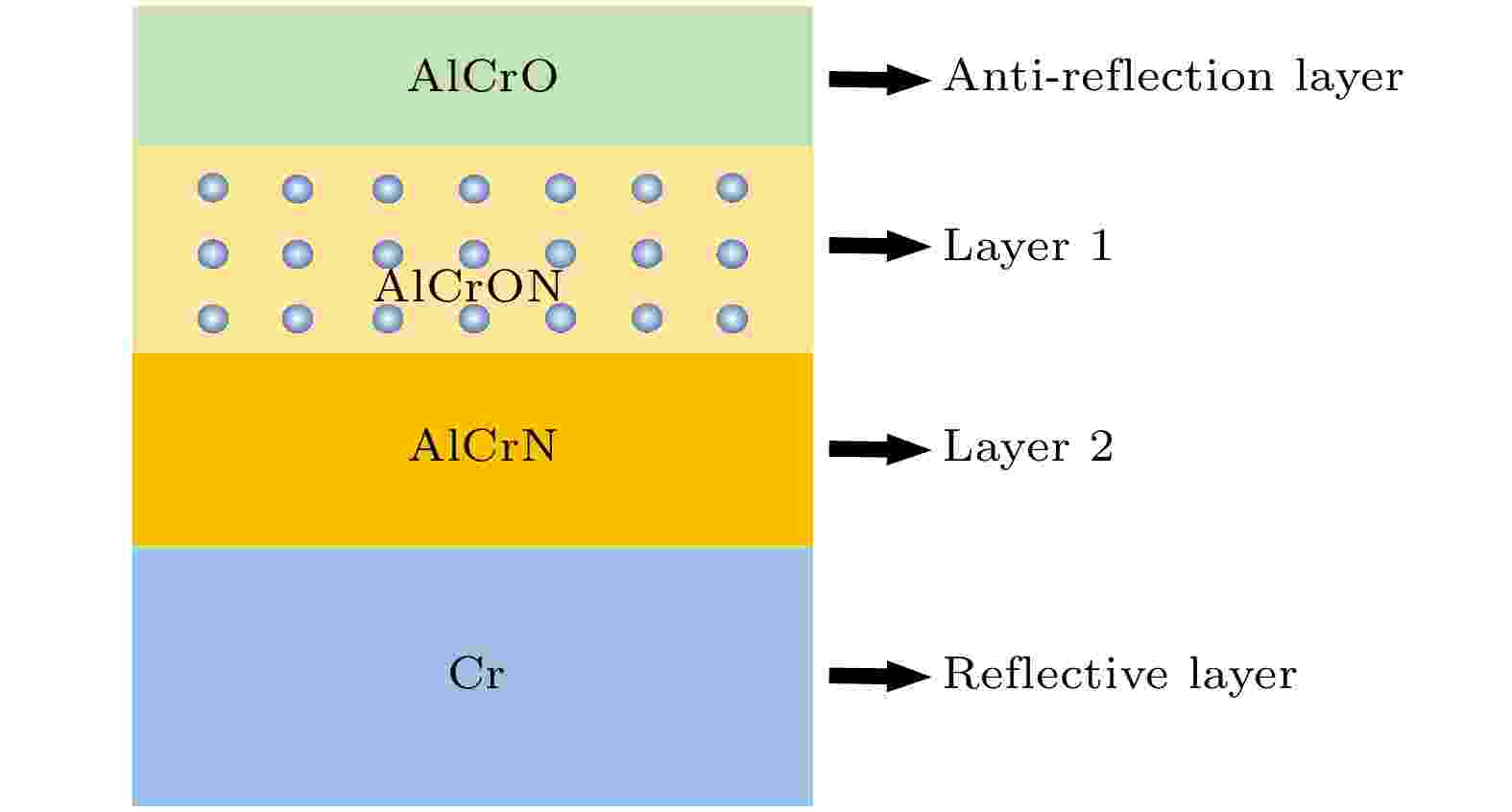
2023, 72 (5): 057103.
doi:10.7498/aps.72.20221693
Abstract +
To enhance the thermal stability of cermet-based photothermal conversion coatings, the present paper proposes a novel strategy to replace the randomly distributed nanoparticles with layered structure. This kind of structure can not only suppress the agglomeration and rapid growth of nanoparticles, but also enhance the interaction between the absorber and sunlight. Thus, the thermal stability and selectivity can be simultaneously improved by this unique kind of structure. Then, a Cr/AlCrN/AlCrON/AlCrO multilayer cermet-based photothermal conversion coating is designed and fabricated by multi-arc ion plating. The microstructure, optical properties and thermal stability of the multilayer coating are studied in detail. The optical properties tests show that the absorptance and emittance of the as-deposited coating achieve 0.903 and 0.183, respectively. More importantly, after being annealed at 500 ℃ in air for 1000 h, the absorptance reaches 0.913 and the emittance arrives at 0.199, implying the enhanced selectivity and thermal stability, which are ascribed to the formation of nanolaminates, in which a series of alternating sublayers is observed in the AlCrON absorber. The nanolaminate is a two-phase composite structure composed of layered AlN and Cr2N nanoparticles distributed in amorphous dielectric matrix. According to the finite difference time domain (FDTD) simulations, this unique kind of microstructure can trap photons in the coating, which is beneficial to enhancing the interaction intensity and time between the sunlight and absorbing sublayer, and thus improving the absorption of sunlight. In addition, the reduction of particle spacing during annealing will lead to the red shift of extinction spectrum, which will better match the solar radiation spectrum. At the same time, this kind of structure can avoid the agglomeration of nanoparticles, which can simultaneously tune the optical properties and thermal stability.
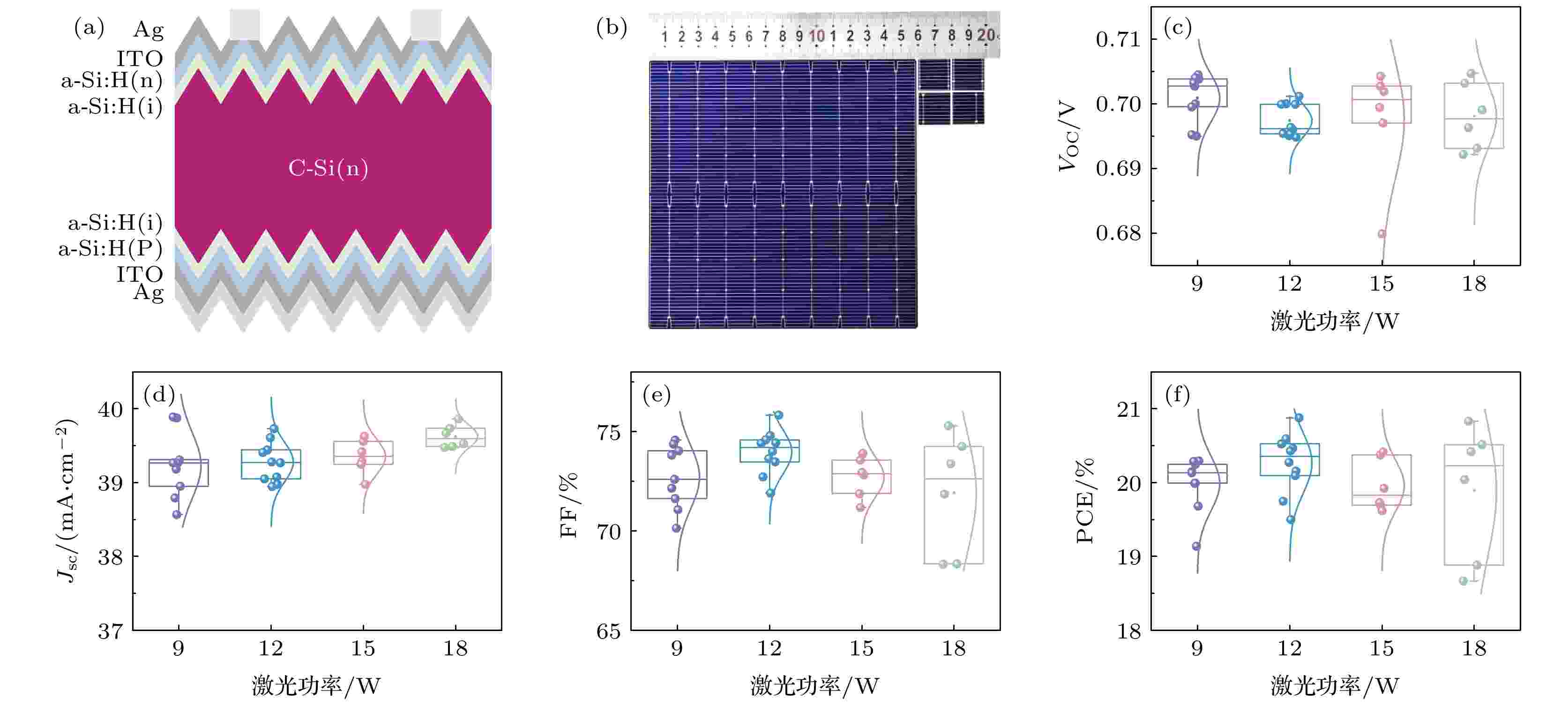
2023, 72 (5): 057302.
doi:10.7498/aps.72.20222209
Abstract +
Although the commercial application of solar cells pursues scalable and large-area devices, small-area solar cells on a scale of several centimeters possess many advantages such as low fabrication cost and facile high-throughput screening in the research laboratory. Most emerging photovoltaic technology starts from the studying of small-area devices. Recently, perovskite/silicon tandem solar cells have aroused extensive research interest because they can break through the radiative efficiency limit of single-junction solar cells. However, when commercial large-area silicon cells are cut into small pieces with a few squared centimeters in area for laboratory use, there occurs a significant efficiency loss, limiting the performance of tandem cells. Herein, to eliminate the thermal damage caused by the traditional laser cutting method and also reduce the non-radiative recombination of heterojunction silicon cells after being cut, a cold-manufacturing method of grinding wheel dicing is used to cut heterojunction silicon cells. This method is realized by high-speed mechanical grinding accompanied by liquid washing, which avoids damaging the edge of solar cell caused by heat. Compared with the device cut by laser, the heterojunction silicon cells cut by the cold-manufacturing method exhibit less cross-sectional damage. The measurements by scanning electron microscopy (SEM) and three-dimensional optical profilometer reveal that the morphology of the device edge is smoother than the counterpart cut by laser. Device physics measurements including electrochemical impedance spectrum(EIS), dark current-voltage curves, transient photovoltage (TPV), transient photocurrent (TPC), and the dependence of short-circuit current density and open-circuit voltage on light intensity reveal that the cold-manufacturing method can significantly prevent the heterojunction silicon cells from non-radiatively recombining after being cut. These results indicate that the edge-recombination of the silicon solar cells cut by grinding wheels is reduced compared with that cut by laser. As a result, statistical analysis of the device performance reveals that both the open-circuit voltage and fill factor of the device are improved, and the average photoelectric conversion efficiency increases by an absolute efficiency of ~1%. Stacking the obtained silicon cells with the normal transparent perovskite solar cells, the obtained four-terminal perovskite/silicon tandem solar cells deliver an efficiency of over 28%. This work emphasizes the importance of reducing efficiency loss during manufacturing the heterojunction silicon solar cell in fabricating high-performance silicon-based tandem solar cells.
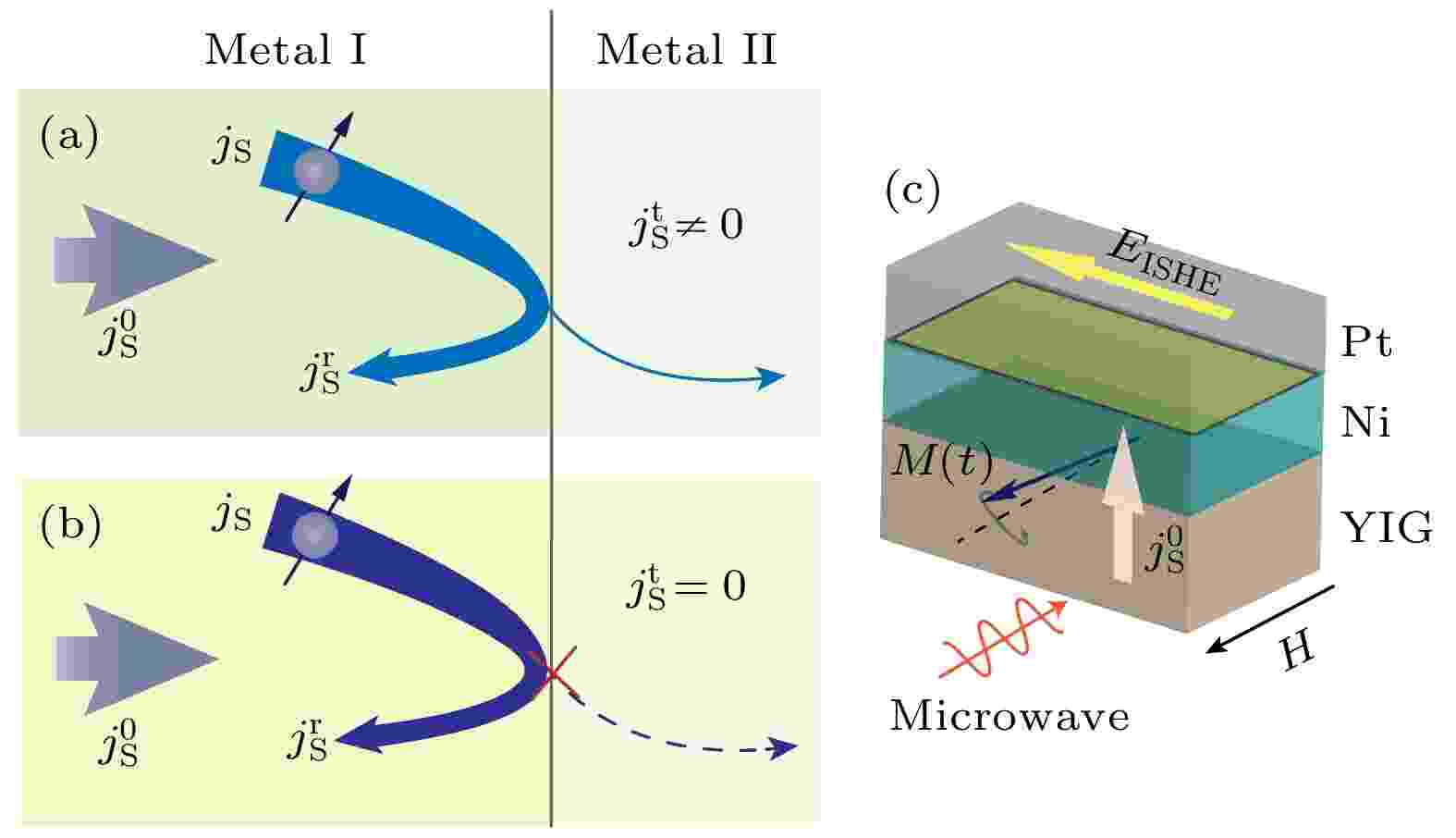
EDITOR'S SUGGESTION
2023, 72 (5): 057501.
doi:10.7498/aps.72.20222288
Abstract +
Spin current, the flow of spin angular momentum, can carry and transport energy and/or information without generating Joule heating, which makes spin-based devices become one of the potential aspects for the next-generation information processing devices. It is important to investigate the generation, transport, and detection of spins for developing spin-based devices, in which the spin transport and its related phenomena attract ongoing interest due to the complex interactions between spins and condensed matter system. Here, spin transport phenomenon is studied at a heterojunction consisting of ferromagnetic metal nickel and nonmagnetic heavy metal platinum, where transport spins are found to be totally blocked. Two series of spin-pumping devices, i.e. the yttrium iron garnet (YIG)/Ni/Pt trilayer devices and the contrastive YIG/Ni bilayer devices, are made in this work. The YIG serves as a substrate and spin-pump layer, on which nickel film and platinum film are deposited by a dc magnetron sputtering system. Spin currents are generated from YIG and injected into nickel layers by spin pumping technology. The voltage signals corresponding to the inverse spin Hall effect are detected and analyzed comparatively for both YIG/Ni/Pt trilayer device and YIG/Ni bilayer device. It is found that the platinum layers in YIG/Ni/Pt trilayer devices act only as charge current shunting but do not contribute to the spin-charge conversion. This implies that the spin current cannot transport through the Ni/Pt interface even when the nickel layer is as thin as 1 nm, in other words, the spin current is blocked at the Ni/Pt interface. Our result proposes a heterojunction that can block transport spins totally, which has never been discussed before, and the present study may expand the views and promote the development of spin-based devices.
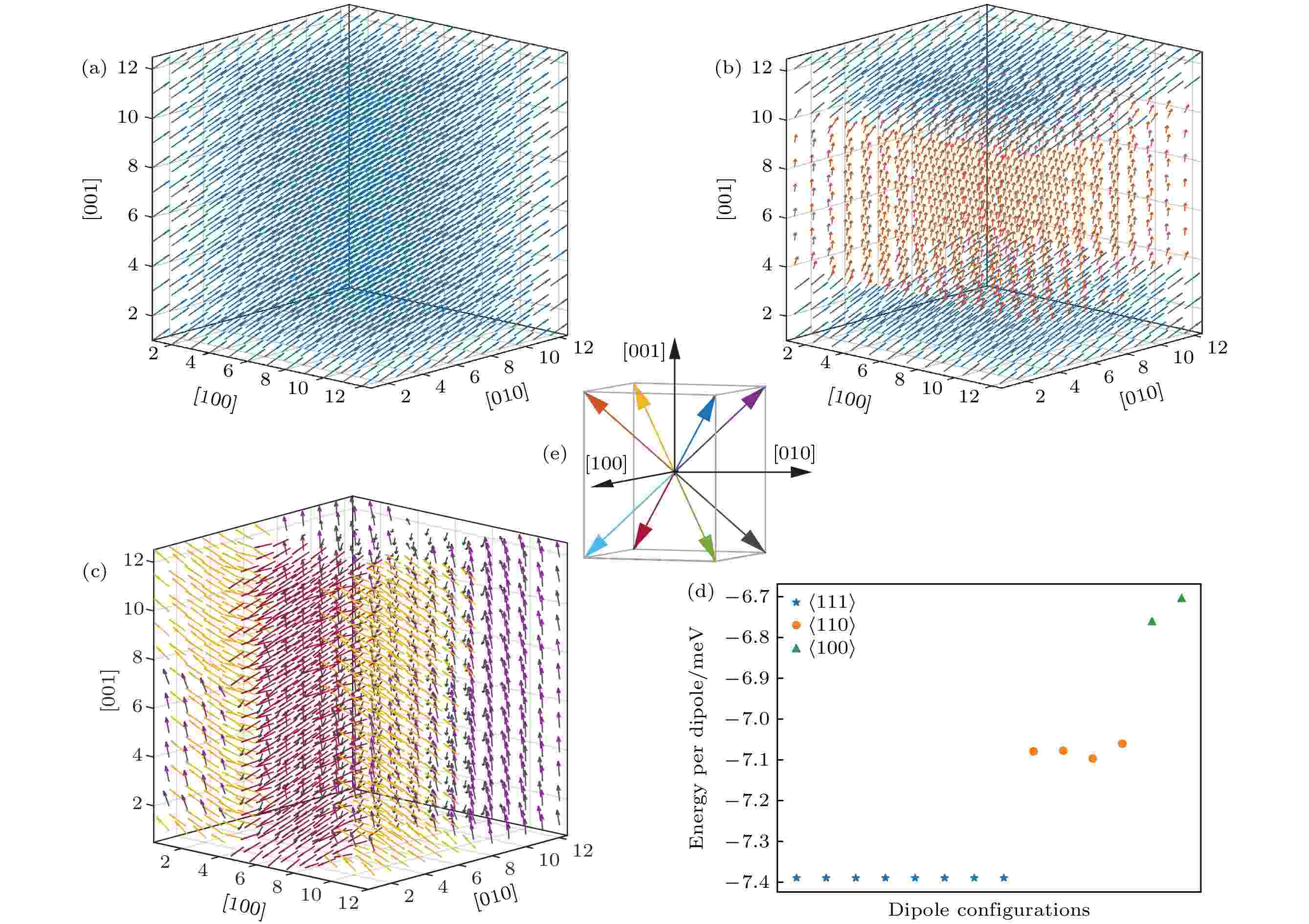
EDITOR'S SUGGESTION
2023, 72 (5): 057502.
doi:10.7498/aps.72.20222150
Abstract +
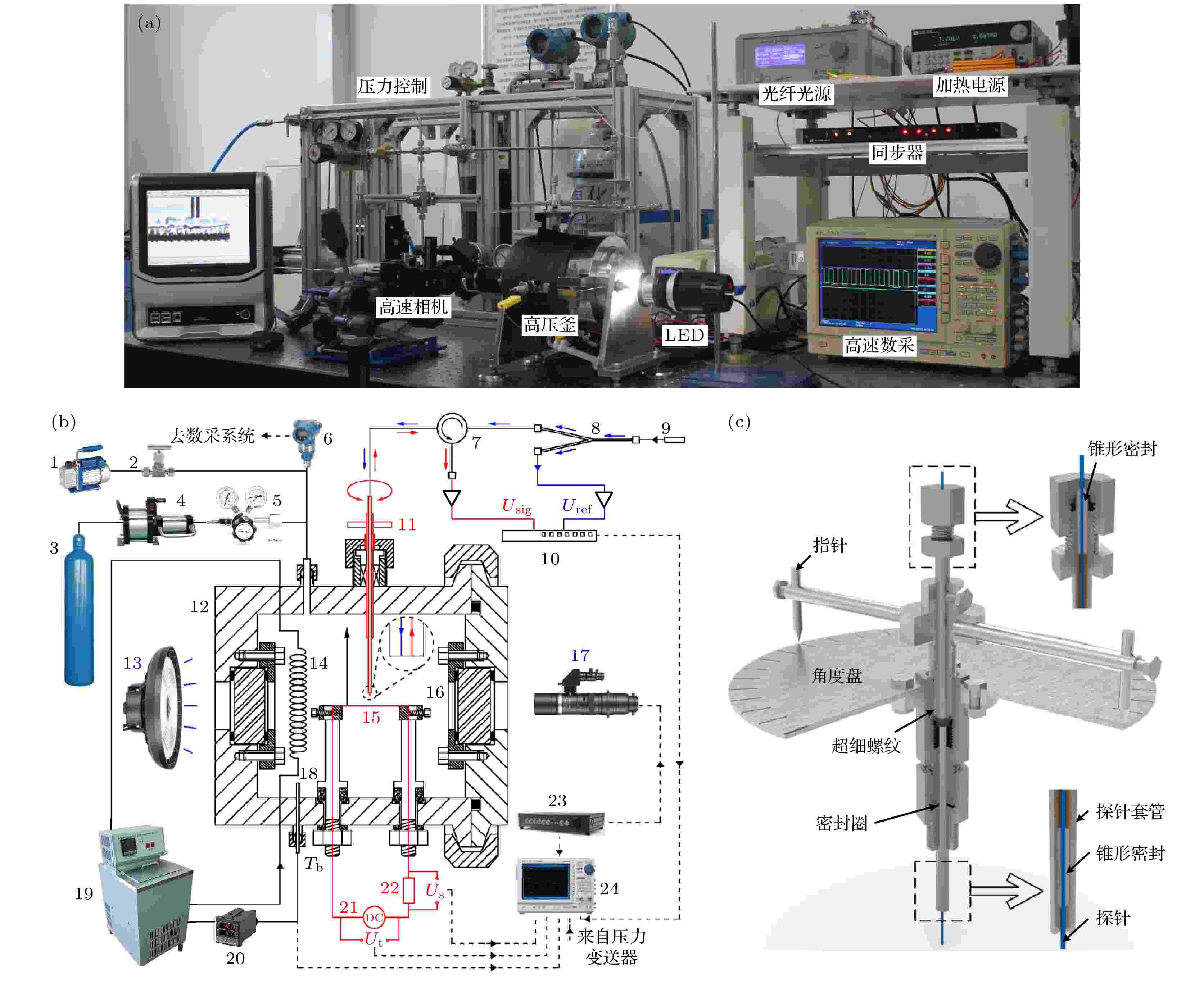
2023, 72 (5): 057801.
doi:10.7498/aps.72.20222060
Abstract +
Subcritical boiling includes interfacial evaporation and heat transfer induced by bubble dynamics. However, for supercritical heat transfer, direct experimental evidence of the existence of pseudo-evaporation and pseudo-boiling heat transfer, as well as the conversion between them is lacking. In this work, the experimental study of supercritical carbon dioxide pool heat transfer is conducted. The pressure and temperature of the cell are 8–10 MPa and 15 ℃, respectively. As heating element and temperature sensing element, a nickel-chromium alloy wire with a length of 22 mm and diameter of 70 μm is placed horizontally in the high-pressure cell. The fiber optic probe is placed vertically, with its tip 200 μm above the wire. Four heat transfer modes, i.e. natural convection, pseudo-evaporation, transition of evaporation and boiling, and pseudo-boiling, are found to occur sequentially with the increase of heat flux density or wall superheat. Natural convection occurs when the wall temperature is below the pseudo-critical temperature. This work focuses on pseudo-evaporation and pseudo-boiling heat transfer and the transition between them. In the pseudo-evaporation mode, the heat transfer coefficient decreases slightly with wall superheat increasing. The fiber outputs a high frequency signal with small amplitude, and there is no dominant frequency. The multiscale entropy is large, characterizing random signal fluctuations. In the transition of evaporation and boiling mode, the fiber outputs a large-amplitude/low-frequency periodic signal with a significant dominant frequency and small multiscale entropy, representing an ordered periodic pulsating heat transfer. In the pseudo-boiling mode characterized by bubble-like structure, the fiber signal fluctuation amplitude and multiscale entropy are between the counterparts of the first two modes i.e. natural convection mode and pseudo-evaporation mode. The dominant frequency is not obvious. The multiscale entropies in the specific case are calculated under different key parameters, such as dimensionality, time scale factor, and length of origin data. Optimal parameters are selected based on the best separation of heat transfer modes. Finally, pseudo-boiling can be distinguished from pseudo-evaporation by multiscale entropy of 0.9, and from transition of evaporation and boiling by multiscale entropy of 0.5. In this work, direct experimental evidence of supercritical-like boiling is obtained, which deepens the understanding of the supercritical heat transfer mechanism and provides a basis for theoretical studies and engineering applications in future.
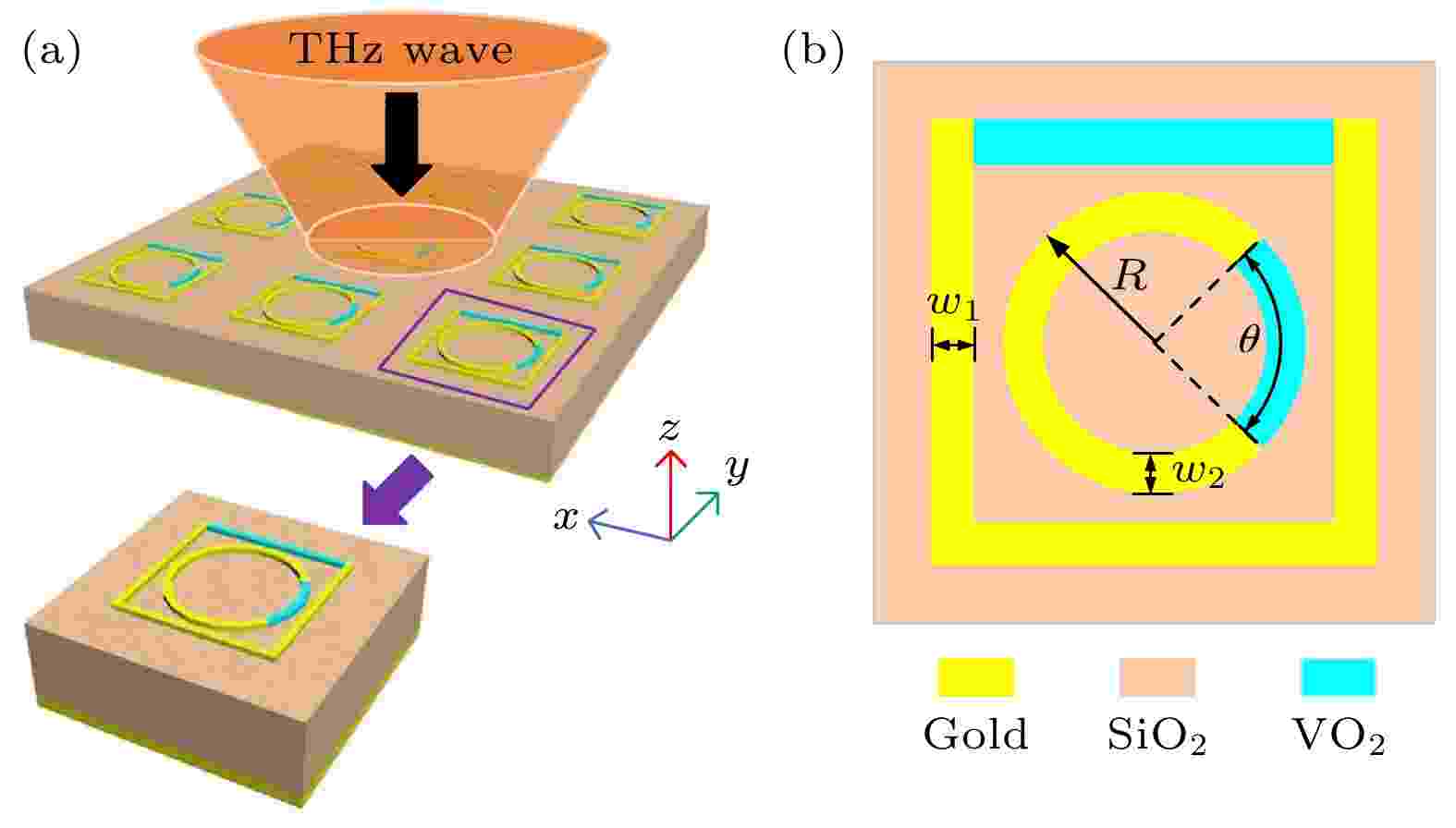
2023, 72 (5): 057802.
doi:10.7498/aps.72.20221832
Abstract +
In recent years, the development of ultrafast laser technology has provided a stable and reliable terahertz source for generating terahertz wave pulses, and the great research progress of terahertz wave has been made. As a new type of two-dimensional artificial metamaterial, metasurface can effectively control the transmission, reflection and polarization of electromagnetic waves, which has attracted the extensive attention. Most of the reported terahertz absorbers so far are based on metasurfaces with linear polarization incidence, and few studies have been conducted on terahertz metasurfaces that can produce efficient absorption at both linear and circular polarization incidence, which limits the practical application areas. Therefore, it is necessary to explore an efficient absorber which can realize both linear polarization and circular polarization. We propose a vanadium dioxide composite metasurface structure. The vanadium dioxide is a typical temperature-controlled phase change material, and its conductivity will undergo a huge mutation in the phase change process. When the temperature is lower than the critical temperature (68 ℃), the vanadium dioxide has high resistivity and good insulation performance. When the temperature is higher than the critical temperature, the resistance changes from high resistance state to low resistance state, showing metal characteristics. By changing the external temperature, the phase of vanadium dioxide is changed, the free switching frequency is achieved and both the linear polarization and circular polarization incident efficient absorption are realized. When the vanadium dioxide is insulated, its conductivity is 0 S/m, the metasurface can absorb left-handed circularly polarized wave at 1.30 THz and reflect the incident right-handed circularly polarized wave, and the circular dichroism is 0.85. When the vanadium dioxide is metallic, its conductivity is 2×105S/m and it possesses linearly polarized incident metasurface, the absorption rate of TE linearly polarized incident wave by metasurface reaches 98.5% at 1.95 THz, and the perfect absorption of terahertz wave is realized. The structure has good wide-angle absorption performance for both TE polarization wave and left-handed circularly polarized wave. This composite metasurface structure can achieve the good absorption effect of terahertz waves with different frequencies and different polarization states. Therefore, the design concept of the composite metasurface structure can be used for designing other metasurface terahertz devices, and also for implementing the terahertz imaging and sensing systems due to different response characteristics to different polarization signals.
INTERDISCIPLINARY PHYSICS AND RELATED AREAS OF SCIENCE AND TECHNOLOGY
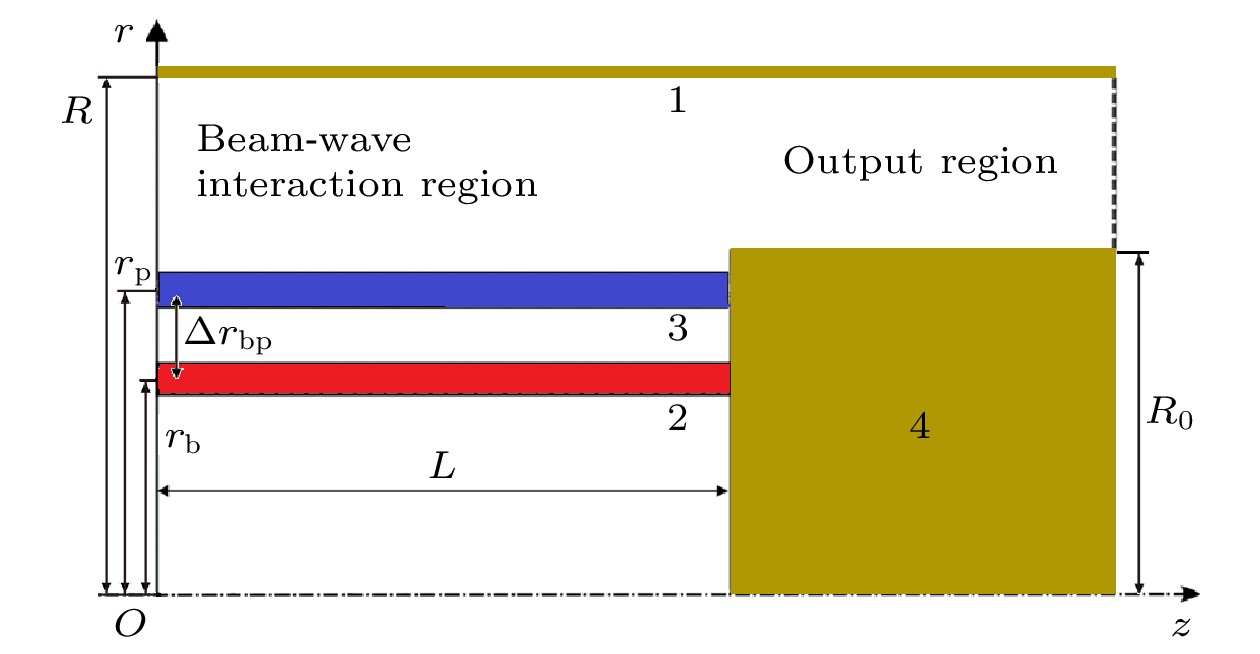
2023, 72 (5): 058401.
doi:10.7498/aps.72.20222061
Abstract +
The physical mechanism and output properties of the plasma relativistic microwave noise amplifier (PRNA) are studied numerically by using the all electromagnetic particle-in-cell (PIC) code. Firstly, the dispersion relation between the operating mode and the slow space charge wave of relativistic electron beam without coupling is simulated and analyzed. Simulation results show that both the plasma densitynpand radial thickness Δrpaffect the dispersion characteristics markedly and their increasing can lead the frequency at the beam-wave resonant point to be enhanced. The beam voltage and current also affect the resonant frequency, but the effect is relatively slight. Secondly, variation of the linear growth rate and the bandwidth are then evaluated by using the linear theory. Calculations show that the PRNA has the virtue of wideband output. Its bandwidth can reach a GHz level. By adjusting the plasma parametersnpand Δrp, the relativistic electron beam voltage and current, the operating frequency can be tuned over a wide frequency range. Therefore the PRNA also has virtue of fine frequency tunability. Based on the above calculation results, the whole PIC simulations of the PRNA are then carried out to verify the virtues of wideband microwave output and frequency tunability. The basic features of the field distributions of the operating in the evolution process and out coupling process are given. The bunching process and the energy release process of relativistic electron beam are also plotted. Simulations show that with a plasma density of 1.4×1019/m3, beam voltage and current of 500 kV and 2 kA and applied magnetic field of 2.0 T, 200 MW output microwave with efficiency about 20% can be obtained. The frequency ranges from about 7.0 to 9.0 GHz, the band width reaches 2 GHz. And the output mode is the TEM mode of the coaxial waveguide. Bothnpand Δrpaffect the dispersion relations markedly and the output frequency increases clearly withnpand Δrpincreasing. The influence of beam voltage and current on the output frequency are both relatively small and the gap distance between the plasma and electron beam has little effect on the output frequency. The research results will provide useful reference for further designing the PRNA.

2023, 72 (5): 058501.
doi:10.7498/aps.72.20221973
Abstract +
Previous research results show that the conductance difference in molecular junction caused by quantum interference (QI) effect is an important way to identify isomers or improve the recognition sensitivity. Recently, single-molecule conductance of two fully π-conjugated dithienoborepin (DTB) isomers (DTB-A and DTB-B) with tricoordinate boron centers has been measured by using the scanning tunneling microscopy break junction technique. The result shows that QI can enhance chemical responsivity in single-molecule DTB junction. In this work, the first-principles method based on density functional theory and non-equilibrium Green's function is used to study the influence of QI effect on spin-transport property of DTB molecular junction connected to the nickel electrode, and the purpose of distinguishing DTB isomers (DTB-A and DTB-B) is realized by using amino and nitro passivation. The results show that the pristine DTB-A molecule and DTB-B molecule both have a up-spin transmission peak dominated by HOMO and a down-spin transmission peak dominated by LUMO on both sides of the Fermi level, and the energy positions and coefficients of two transmission peaks are basically the same. Therefore, the up-spin and down-spin current curves of the two junctions basically coincide, so that it is impossible to clearly distinguish the two isomers of DTB molecule simply by spin current. The QI can enhance the spin-polarized transport capability of two orbitals of amino-passivated DTB-A molecule to varying degrees but weaken the spin-polarized transport capability of two orbitals of amino-passivated DTB-B molecule. Therefore, the current of DTB-A molecular junction passivated by amino group is always higher than that of DTB-B molecular junction passivated by amino group. However, the QI can greatly enhance the spin-polarized transport capability of two orbitals of nitro-passivated DTB-B molecule but weaken the spin-polarized transport capability of two orbitals of nitro-passivated DTB-A molecule. Therefore, the current of DTB-B molecular junction passivated by nitro is always higher than that of DTB-A molecular junction passivated by nitro. Because the QI has different effects on the spin-transport capability of DTB-A and DTB-B passivated by amino or nitro group, so the two isomers of DTB molecule can be distinguished by measuring the spin current value. The above conclusions provide more theoretical guidance for the practical preparation of spin molecular junctions and the regulation of their spin-transport performance in the future.
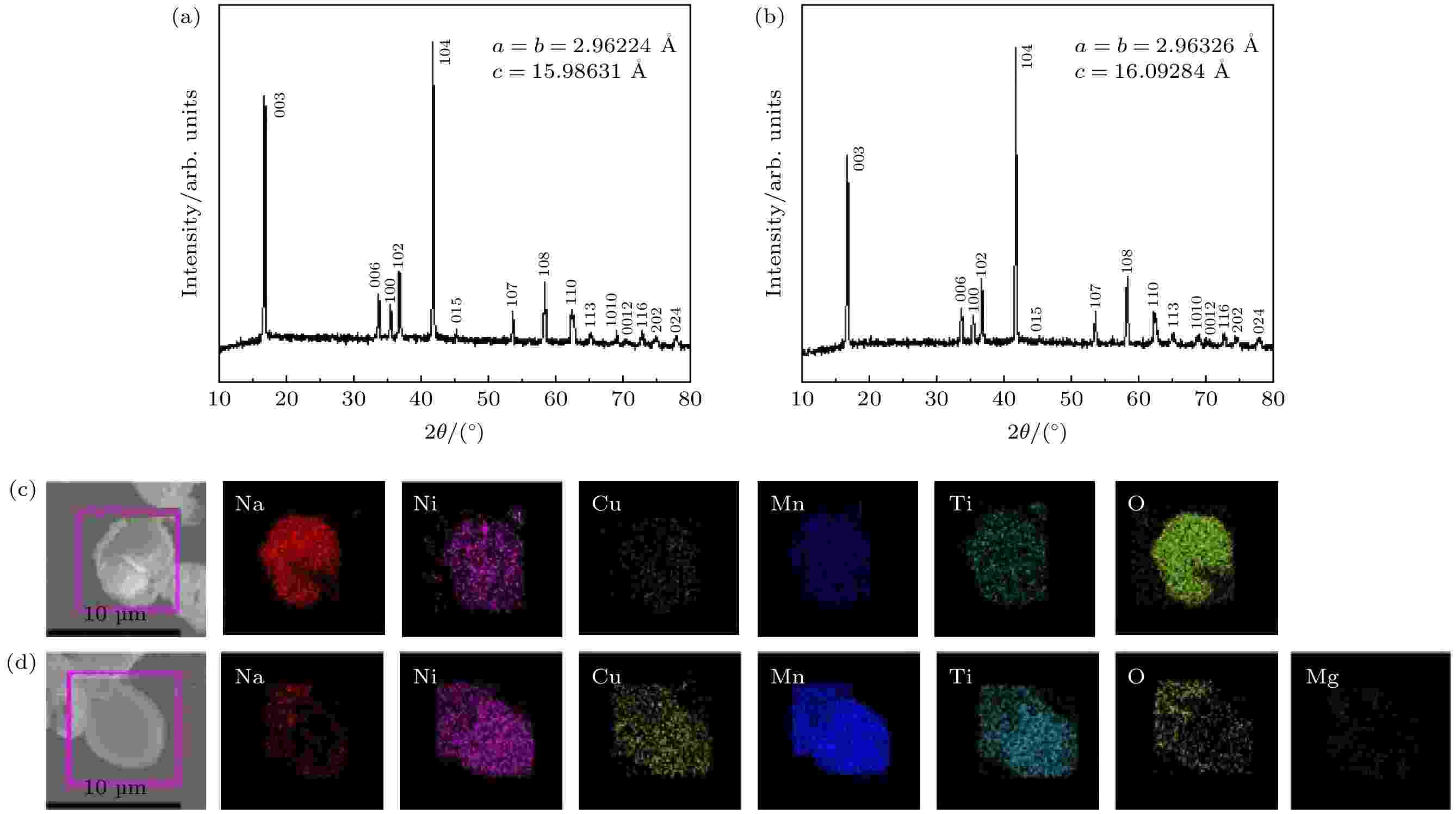
EDITOR'S SUGGESTION
2023, 72 (5): 058802.
doi:10.7498/aps.72.20222098
Abstract +
Driven by global demand for new energy, Li-ion batteries (LIBs) have developed rapidly due to their competitive performance. Although LIBs show the advantages of high capacity and good cycling stability, their disadvantages such as uneven distribution of lithium resources are gradually exposed. Therefore, with abundant reserves, Na-ion batteries (NIB) have become one of the most promising solutions to make up for the deficiency of Li-ion battery. The NIBs layered oxide cathodes have the most potential applications of cathode material due to their high specific capacity (167 mAh·g–1in 2.4–4.3 V) and simple synthesis method. However, improving the cycling stability of layered cathode materials is one of the keys to their large-scale industrialization. To develop high capacity and cycling stability cathode materials, the Mg2+is substituted for Ni2+in NaNi0.4Cu0.1Mn0.4Ti0.1O2(NCMT), thereby obtaining a NaNi0.35Mg0.05Cu0.1Mn0.4Ti0.1O2(NCMT-Mg) cathode material. The NCMT-Mg has a high reversible specific capacity of 165 mAh·g–1in a voltage window of 2.4–4.3 V. The reversible specific capacity of about 110 mAh·g–1at 0.1 C after 350 cycles with a capacity retention of 67.3% is about 13% higher than the counterpart of NCMT. The irreversible reaction is suppressed from P'3 phase to X phase for NCMT. The ex-XRD spectrometers further prove that the NCMT-Mg shows a P3 and X mixed phase after being initially charged to 4.3 V, but the NCMT shows an X phase. The irreversible phase transition is suppressed to increase the cycling stability. The inactive Mg2+replaces Ni2+, reducing the charge compensation and stabilizing the structure, the inactive Mg2+can activate the charge compensation of Ni2+/Cu2+. The electrochemical activity increases from 77% to 86%. The high capacity and excellent cycling stability prove that the NCMT-Mg structure remains intact after various current rates have been tested. The long cycling stability mechanism is further systematically studied by using various technologies. The present work will provide an important reference for developing high-performance Na-ion cathode materials.

Construction method of hybrid quantum long-short term memory neural network for image classification
2023, 72 (5): 058901.
doi:10.7498/aps.72.20221924
Abstract +
Long-short term memory (LSTM) neural network solves the problems of long-term dependence, gradient disappearance and gradient explosion by introducing memory units, and is widely used in time series analysis and prediction. Combining quantum computing with LSTM neural network will help to improve its computational efficiency and reduce the number of model parameters, thus significantly improving the performance of traditional LSTM neural network. This paper proposes a hybrid quantum LSTM (hybrid quantum long-short term memory, HQLSTM) network model that can be used to realize the image classification. It uses variable quantum circuits to replace the nerve cells in the classical LSTM network to realize the memory function of the quantum network. At the same time, it introduces Choquet integral operator to enhance the degree of aggregation between data. The memory cells in the HQLSTM network are composed of multiple variation quantum circuits (VQC) that can realize different functions. Each VQC consists of three parts: the coding layer, which uses angle coding to reduce the complexity of network model design; the variation layer, which is designed with quantum natural gradient optimization algorithm, so that the gradient descent direction does not target specific parameters, thereby optimizing the parameter update process and improving the generalization and convergence speed of the network model; the measurement layer, which uses the Pauli Z gate to measure, and the expected value of the measurement result is input to the next layer to extract useful information from the quantum circuit. The experimental results on the MNIST, FASHION-MNIST and CIFAR datasets show that the HQLSTM model achieves higher image classification accuracy and lower loss value than the classical LSTM model and quantum LSTM model. At the same time, the network space complexity of HQLSTM and quantum LSTM are significantly reduced compared with the classical LSTM network.























